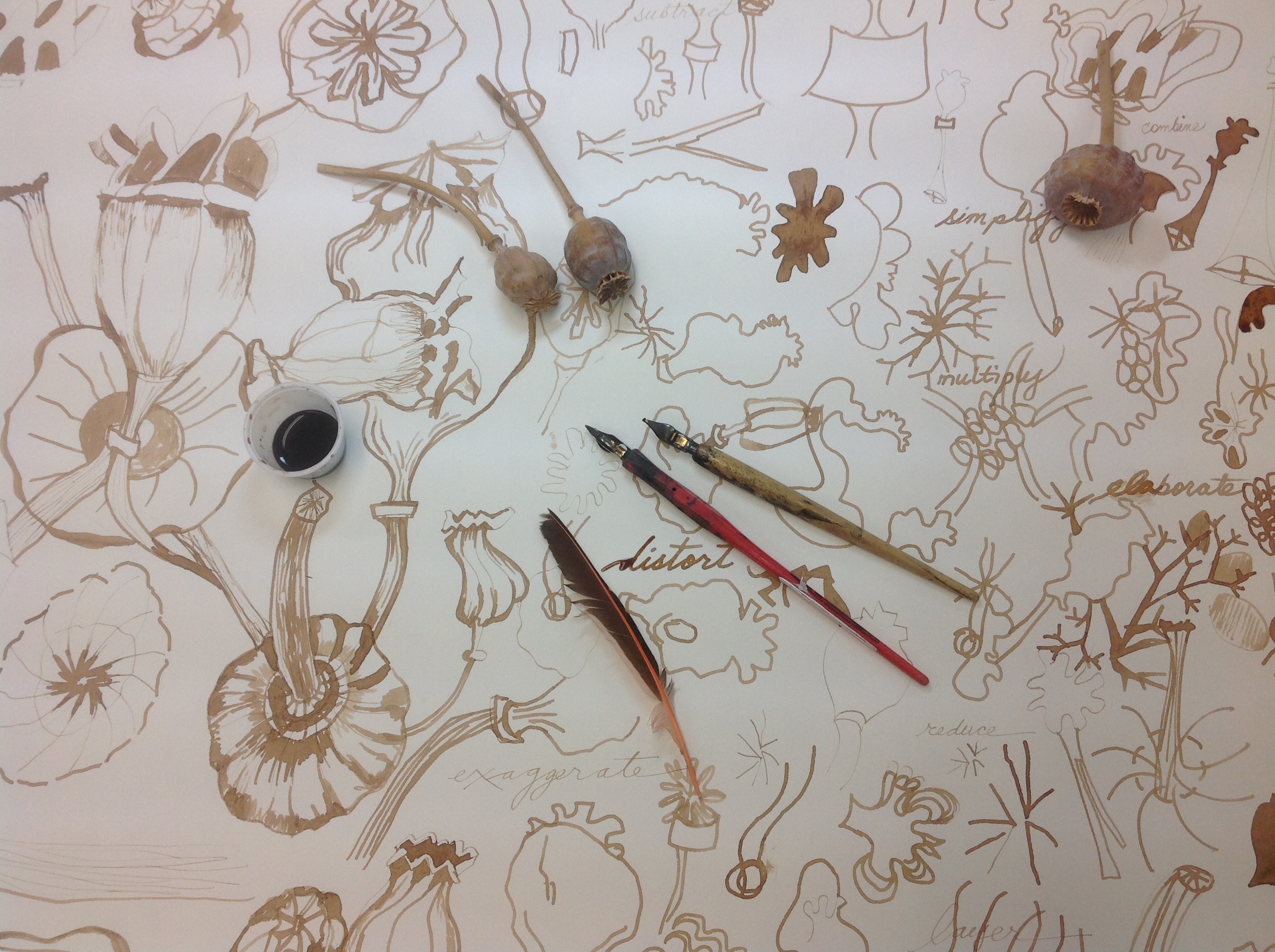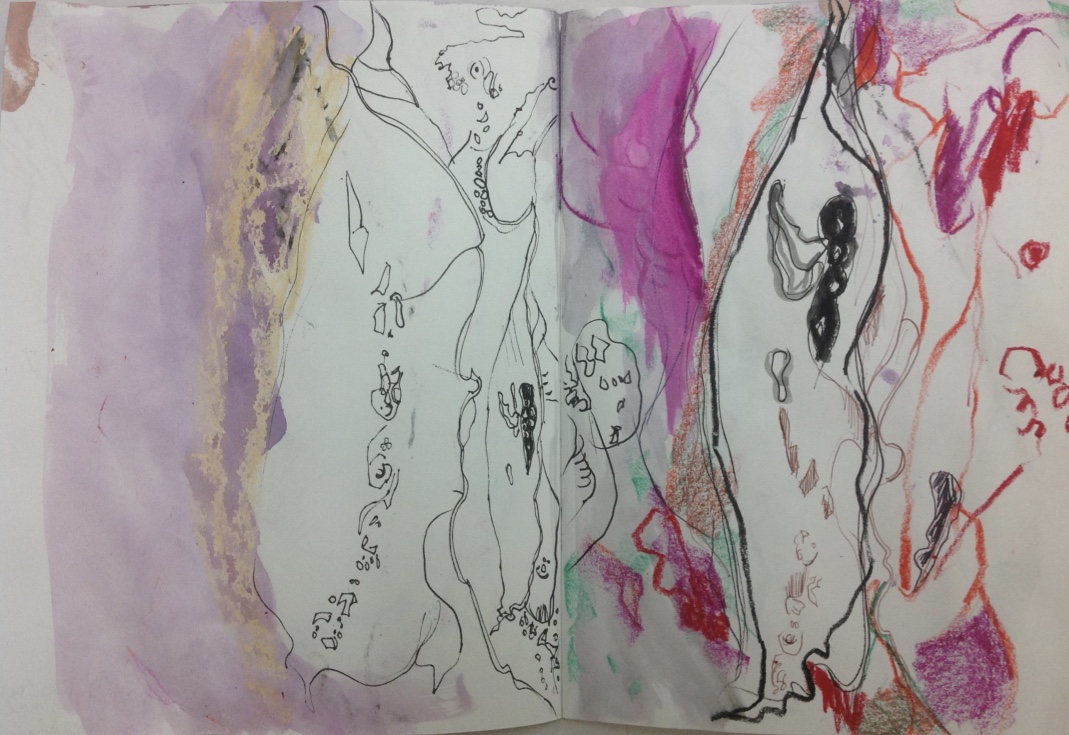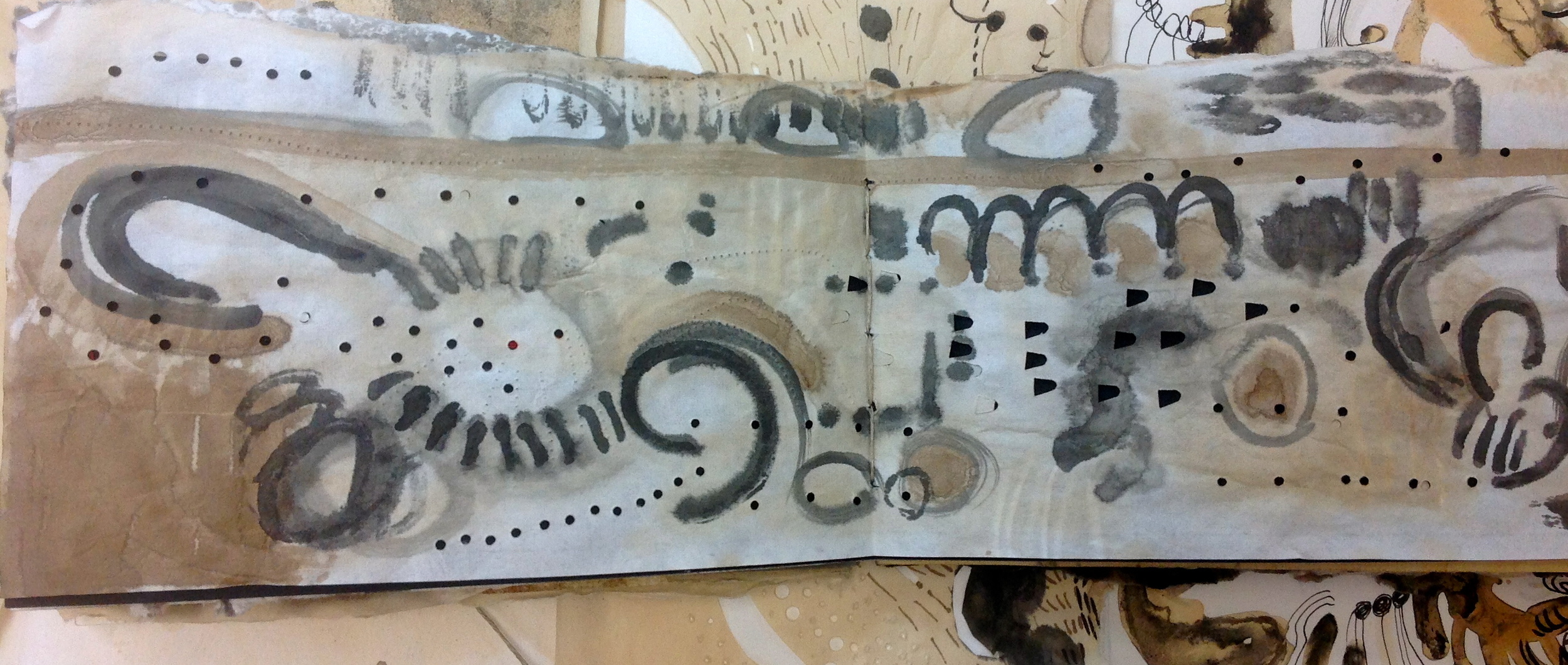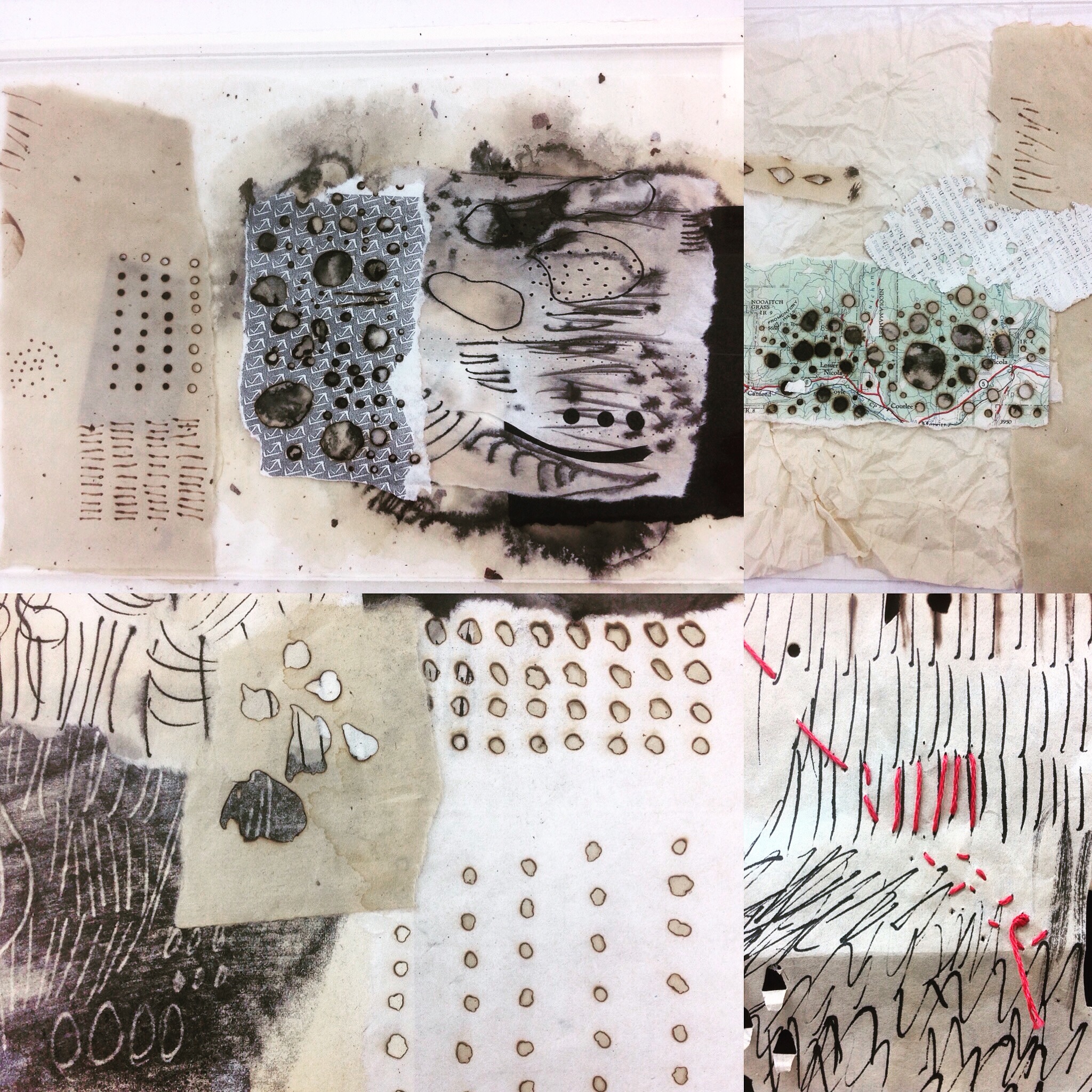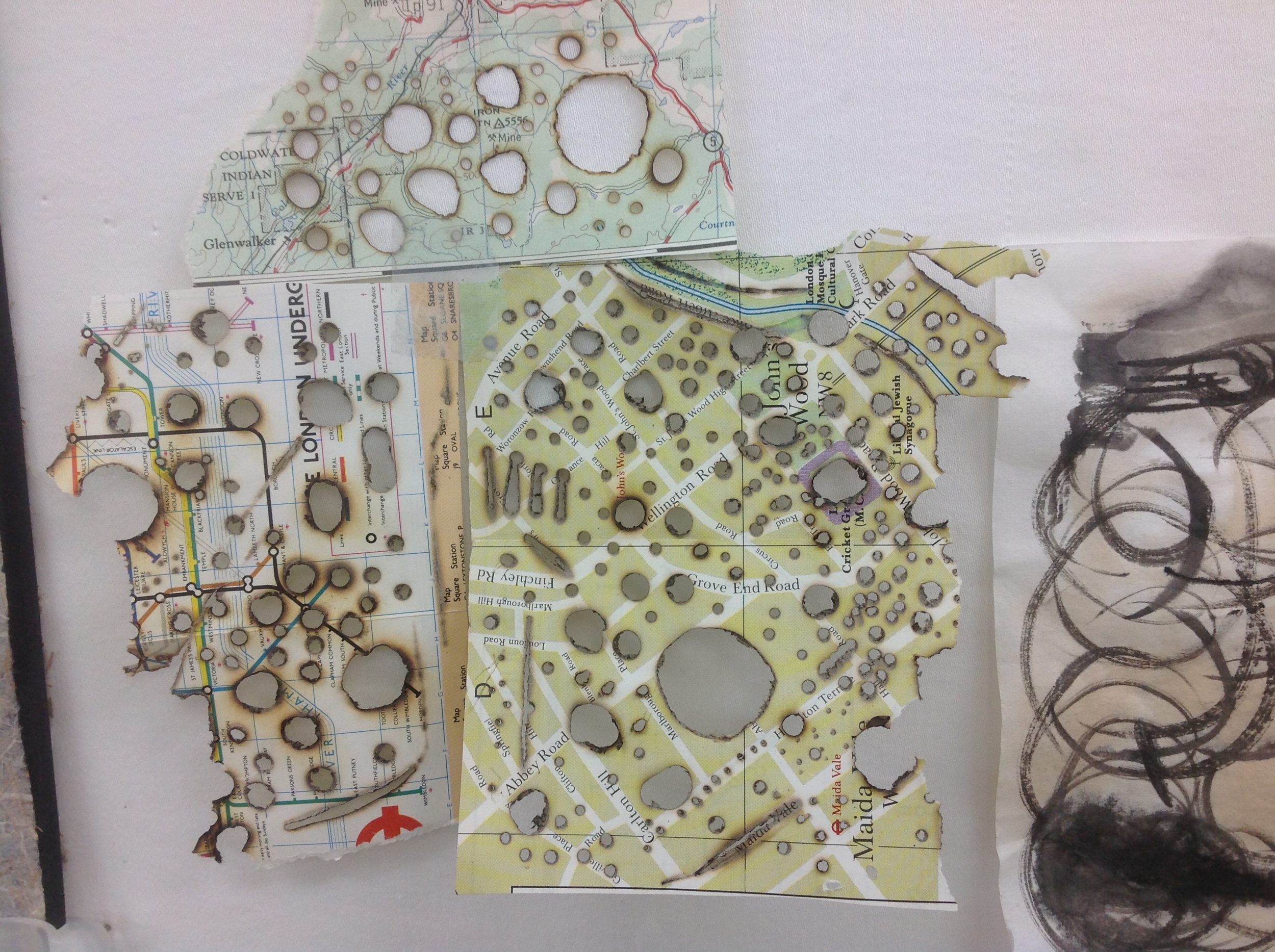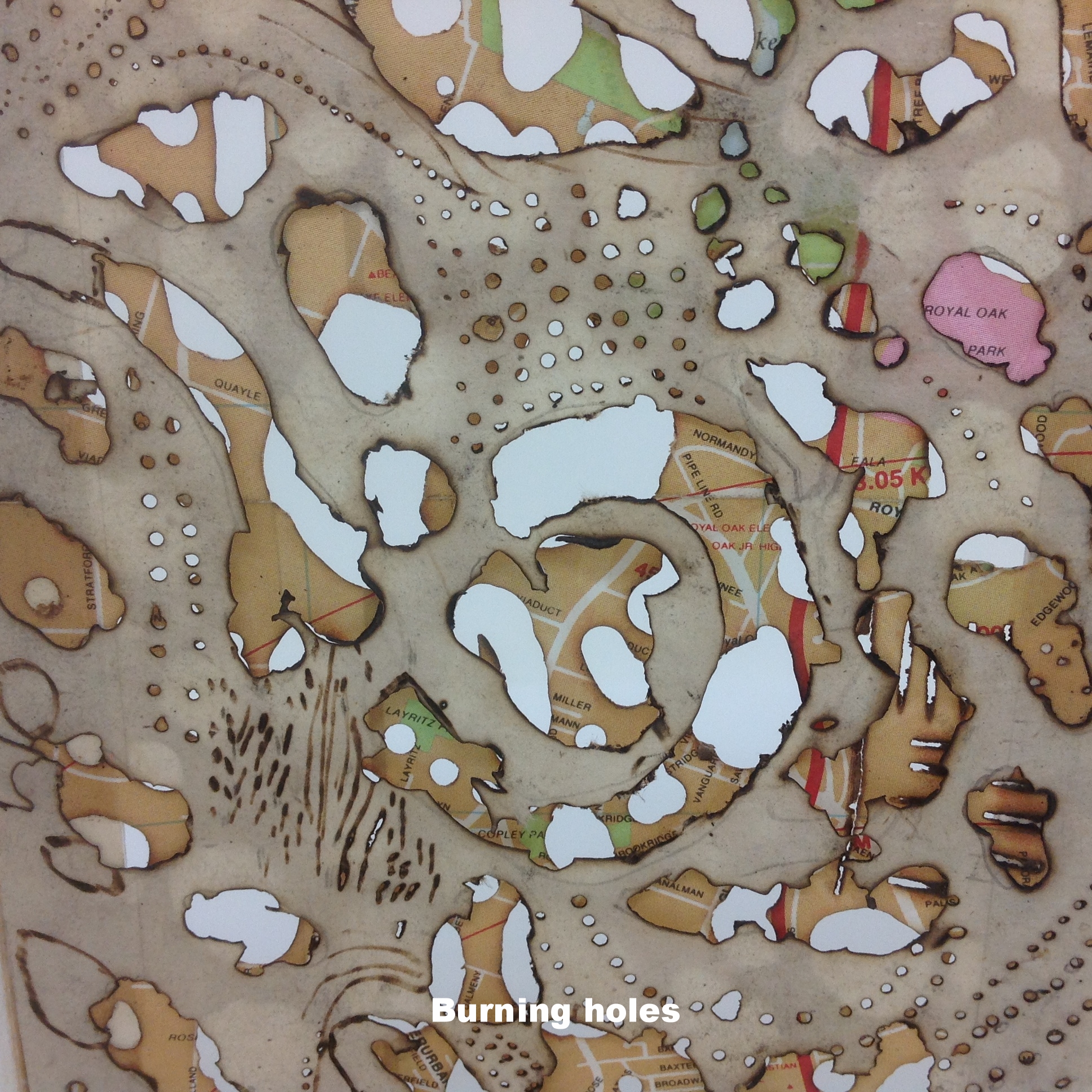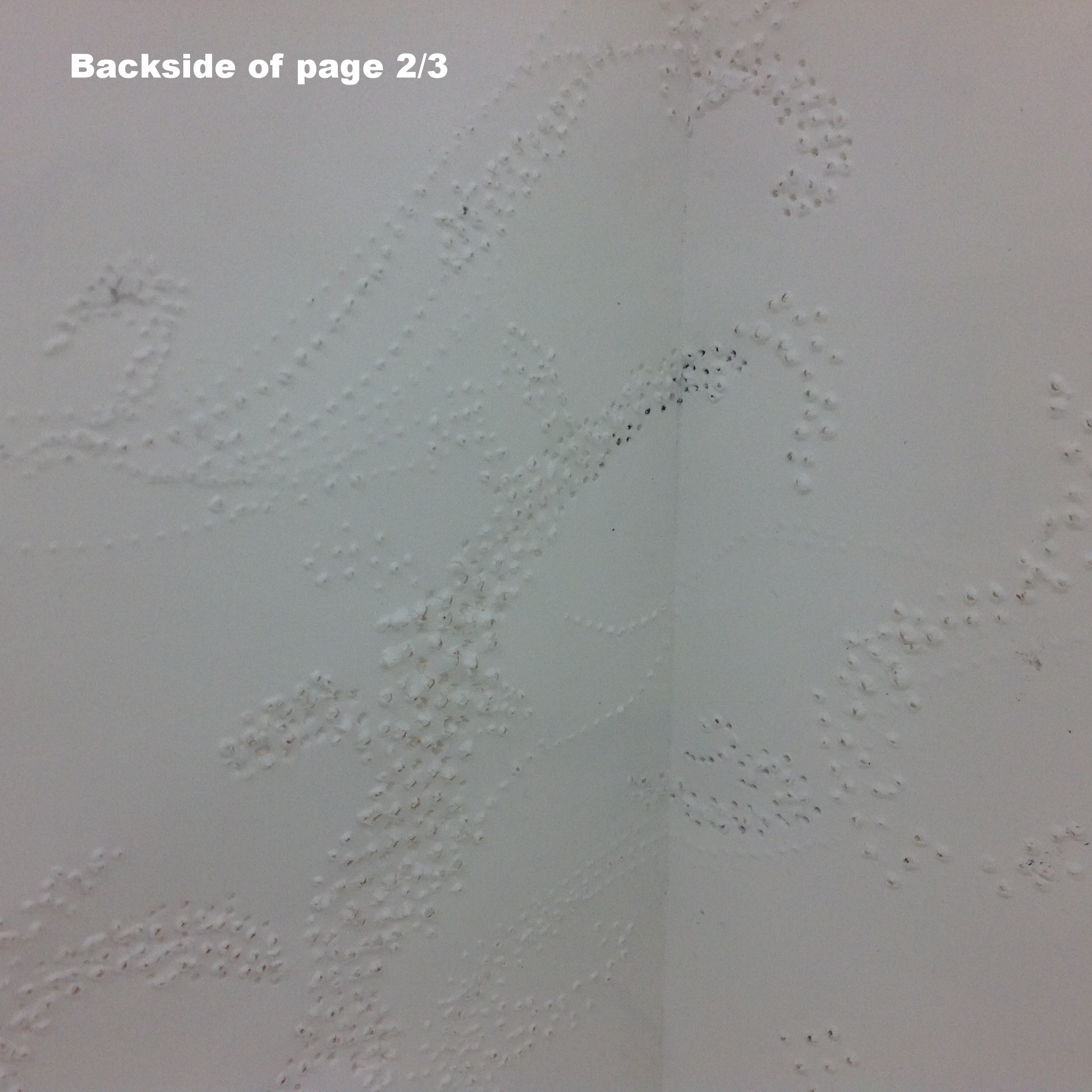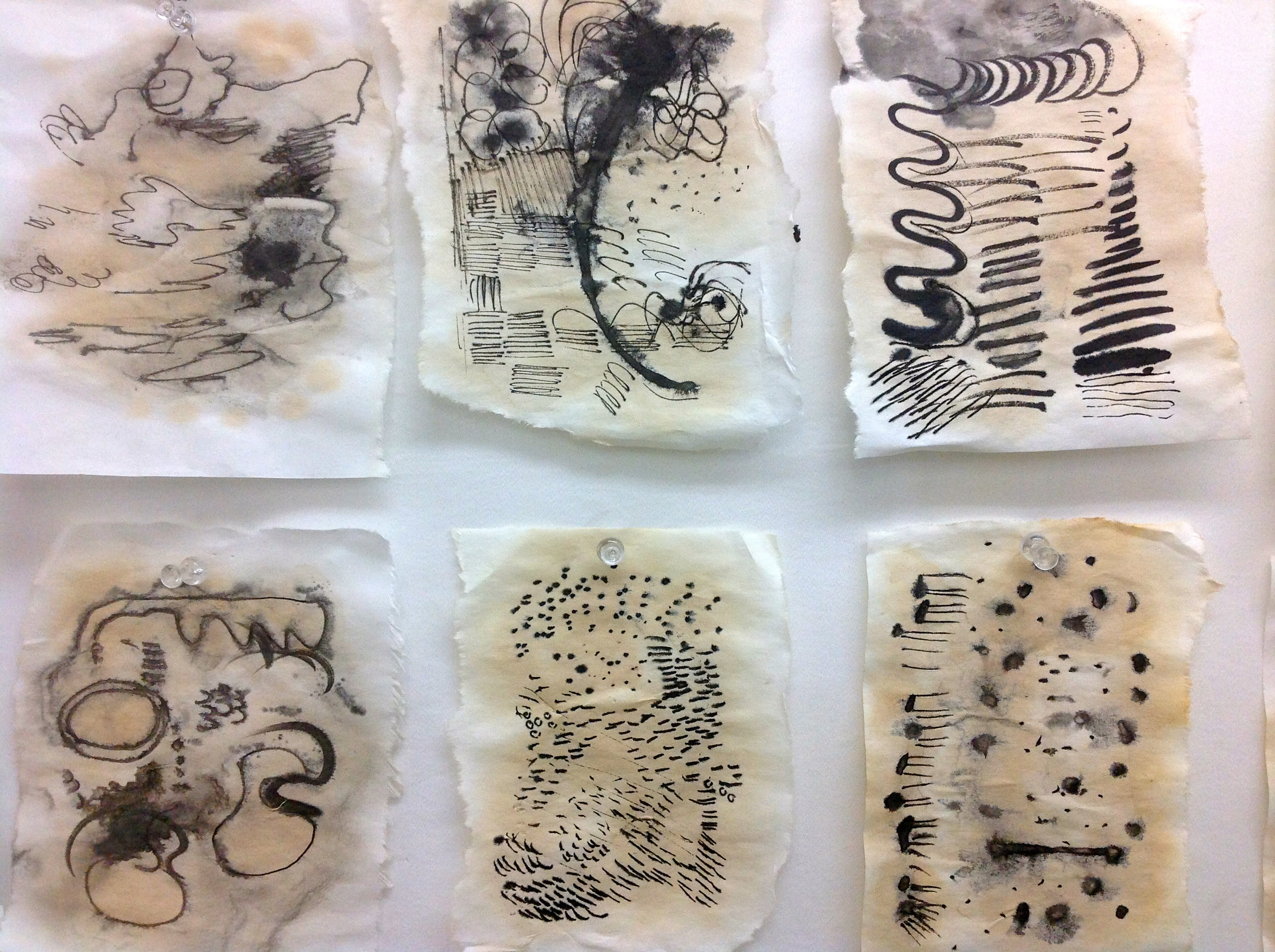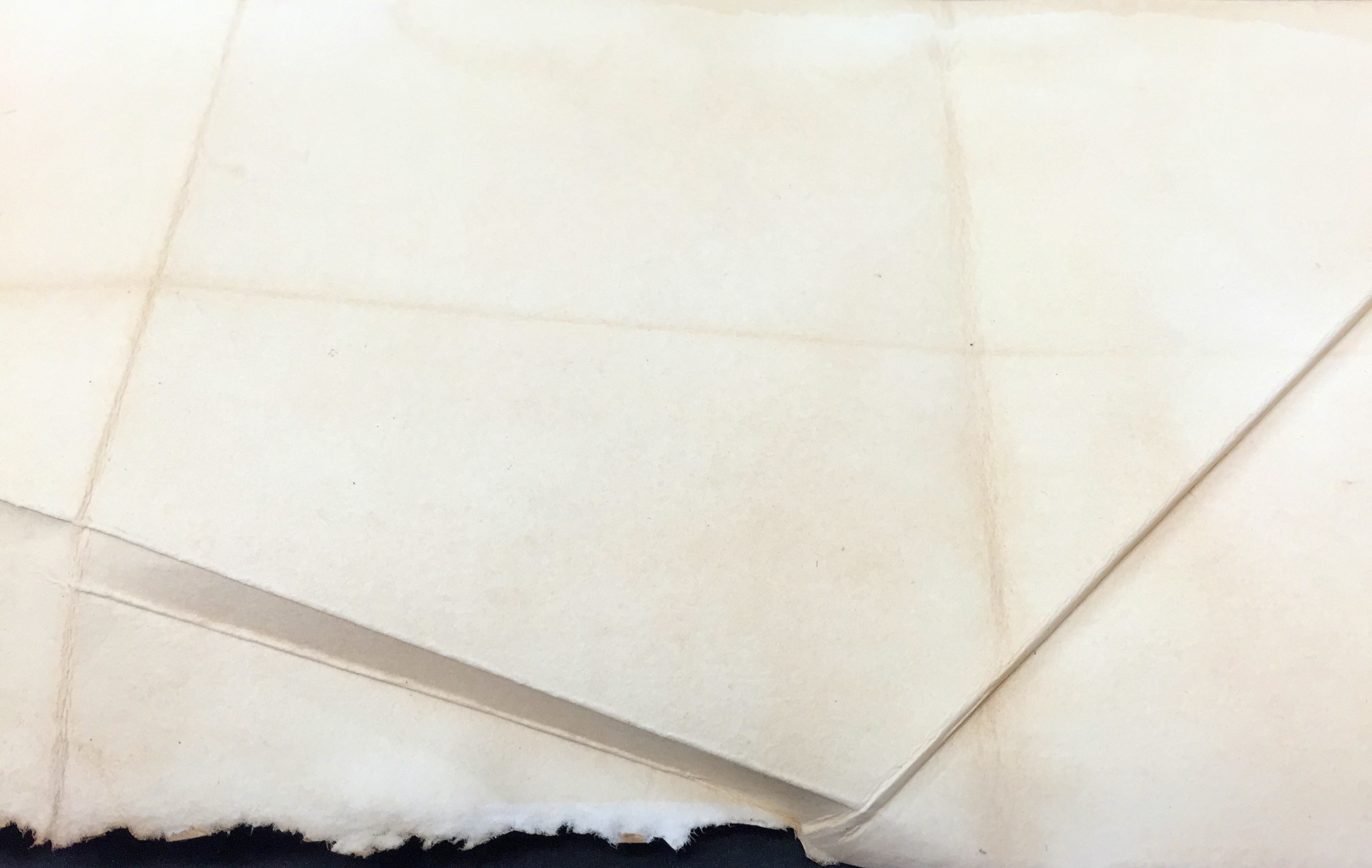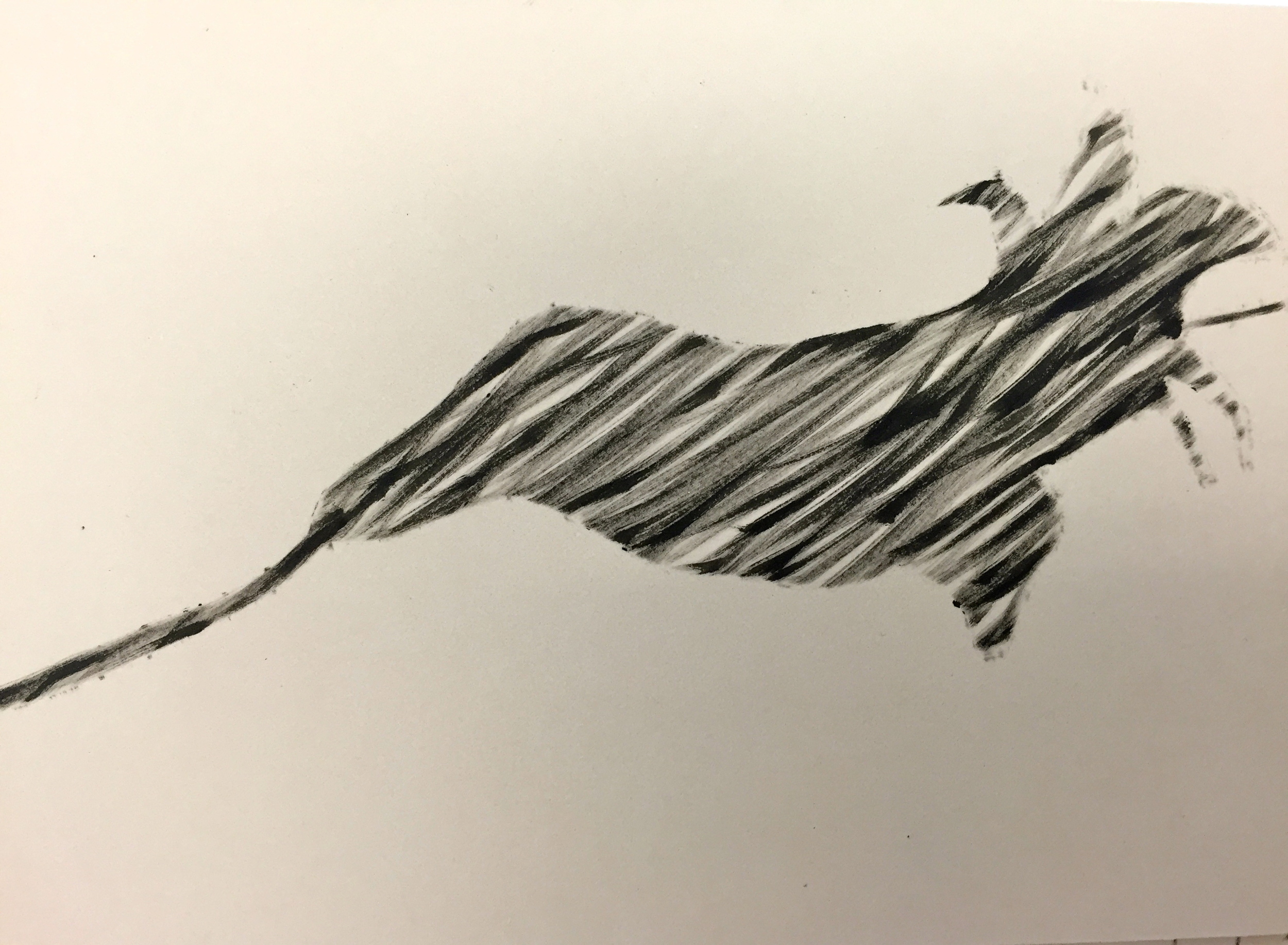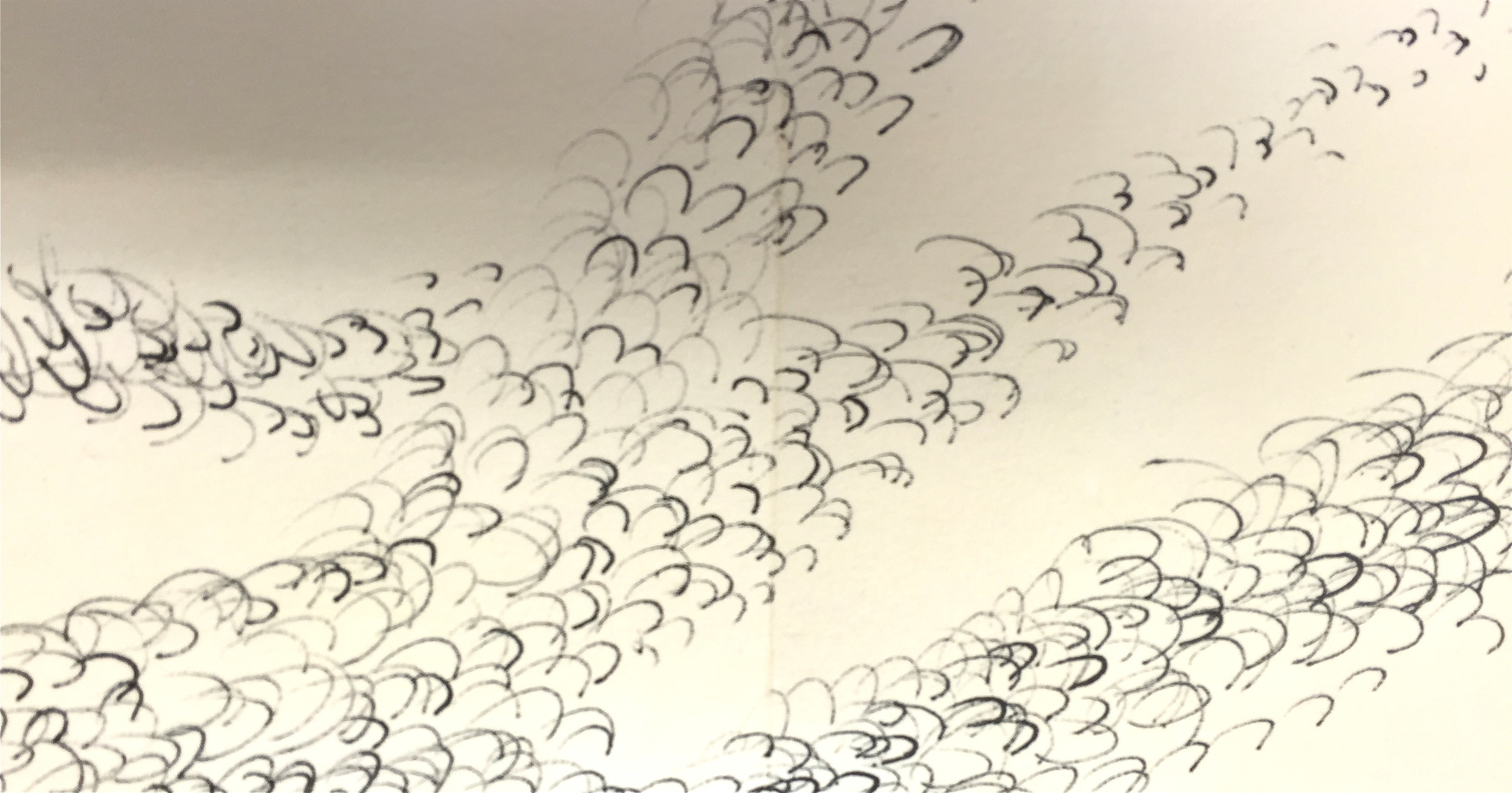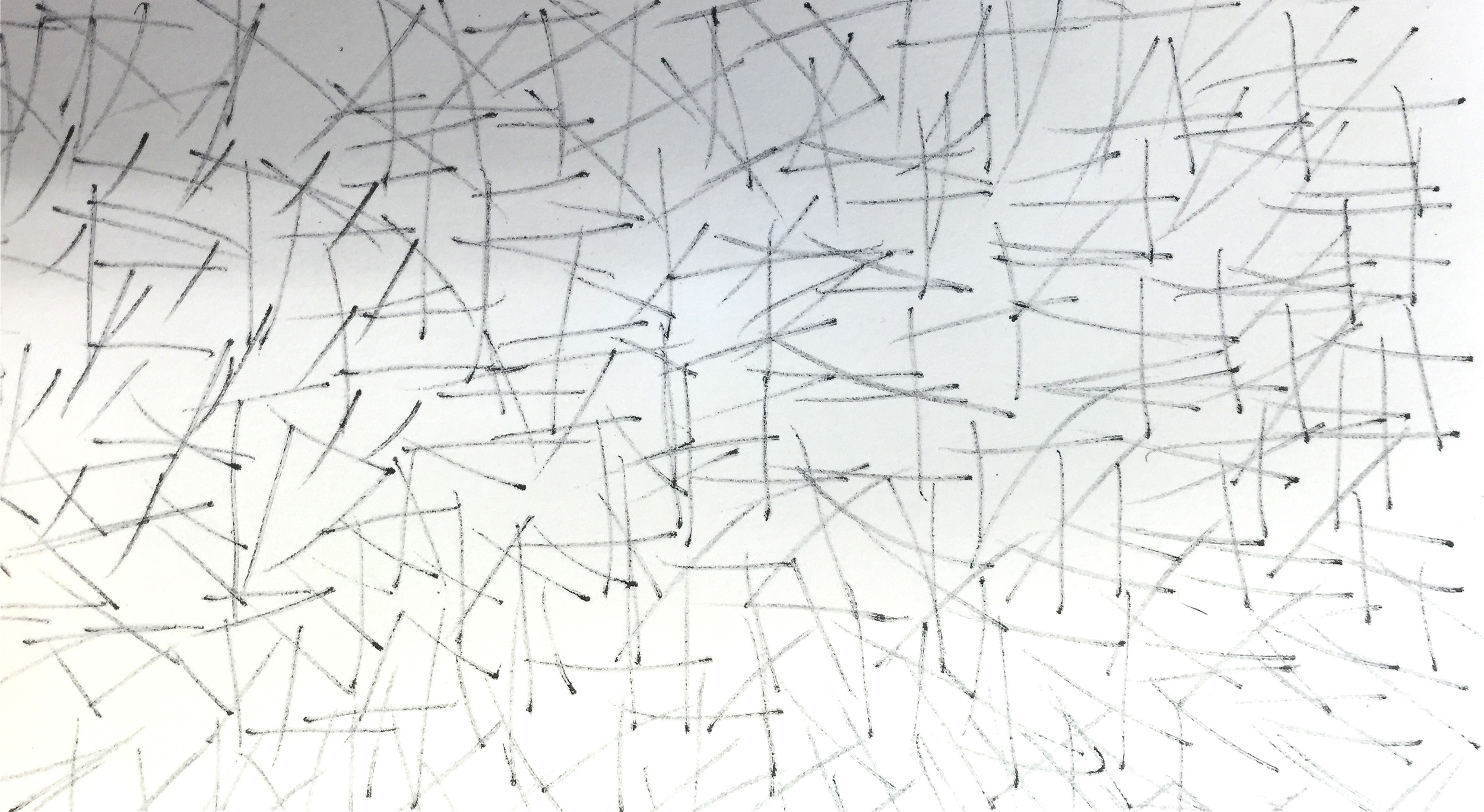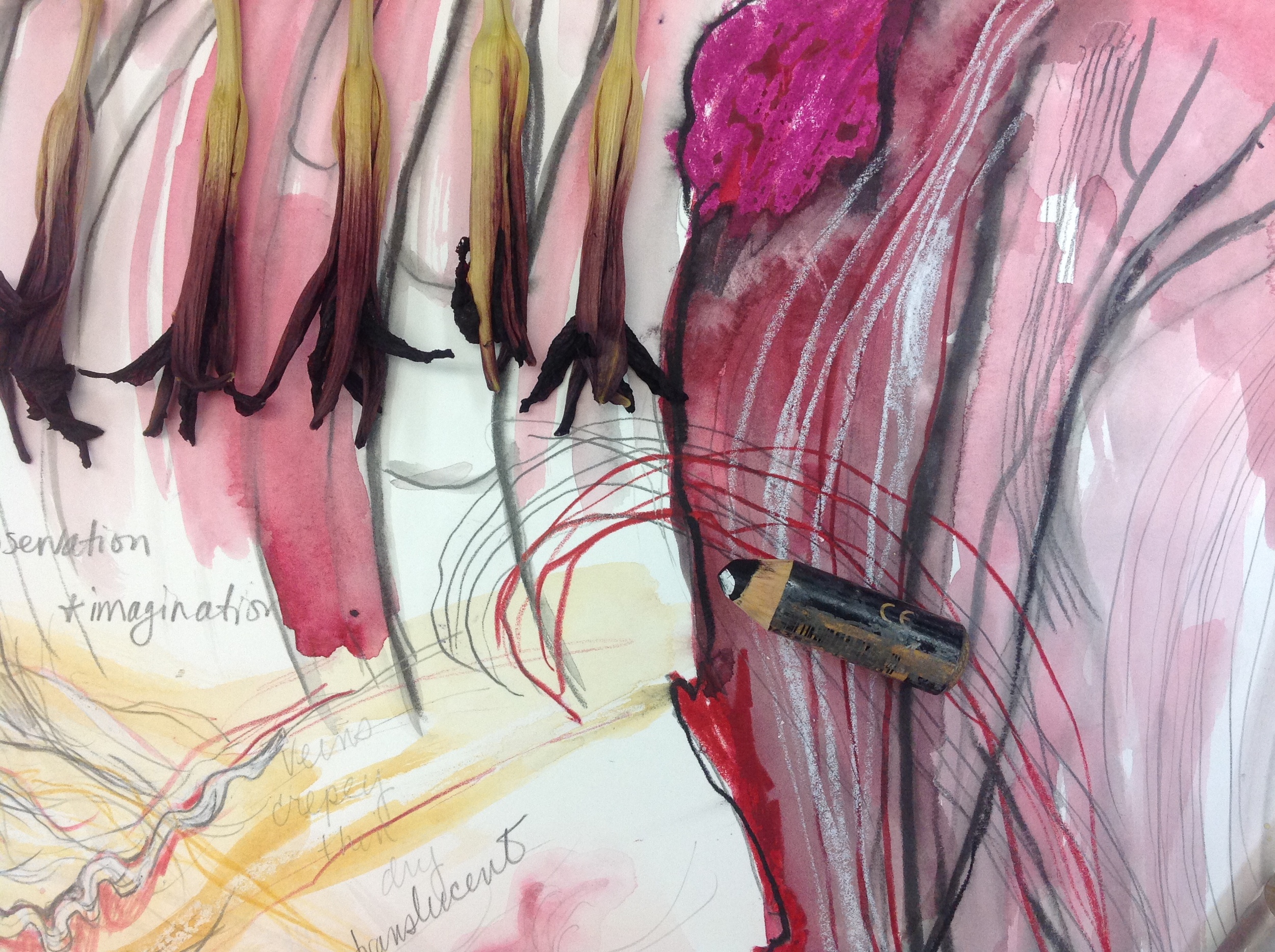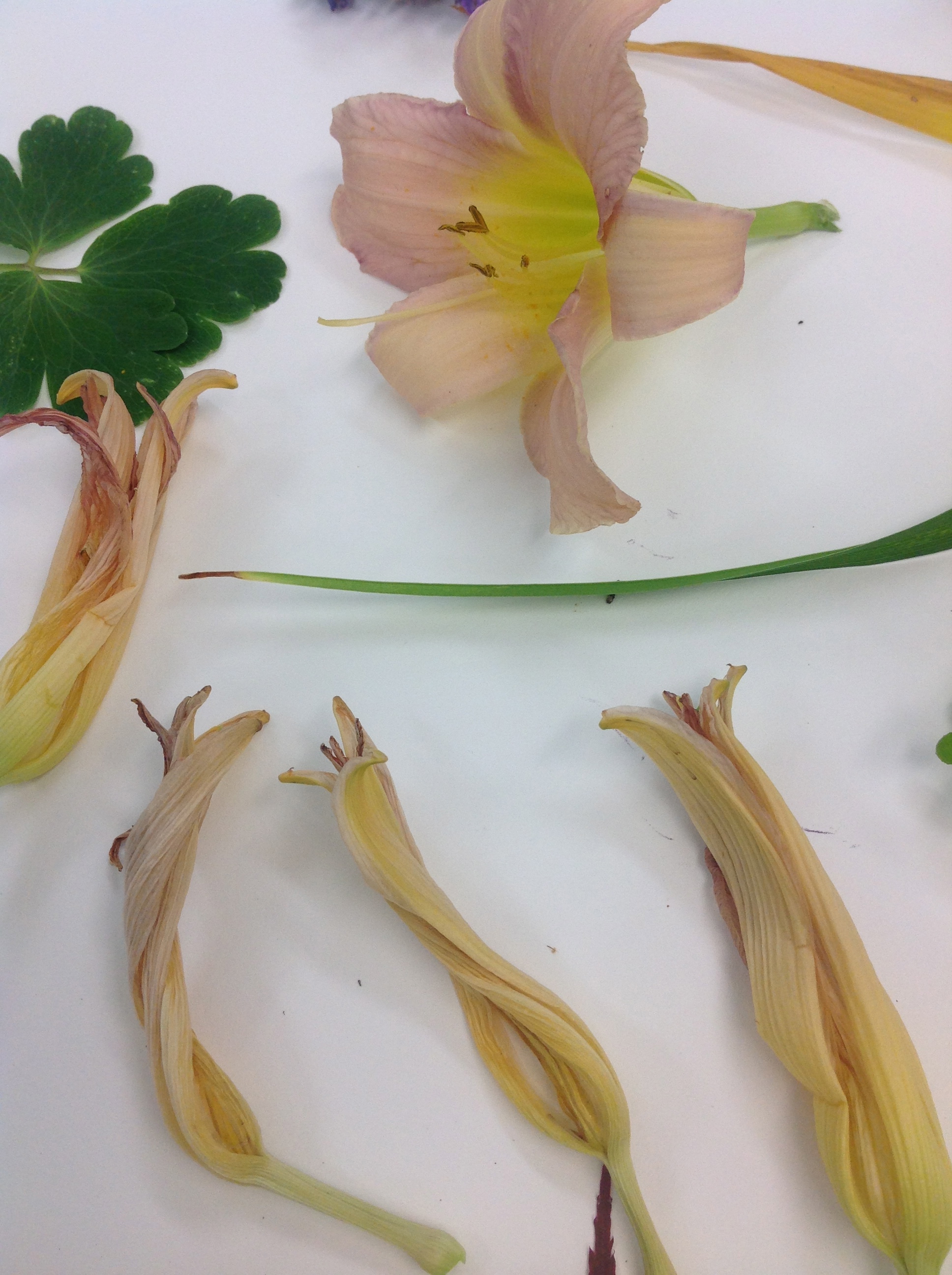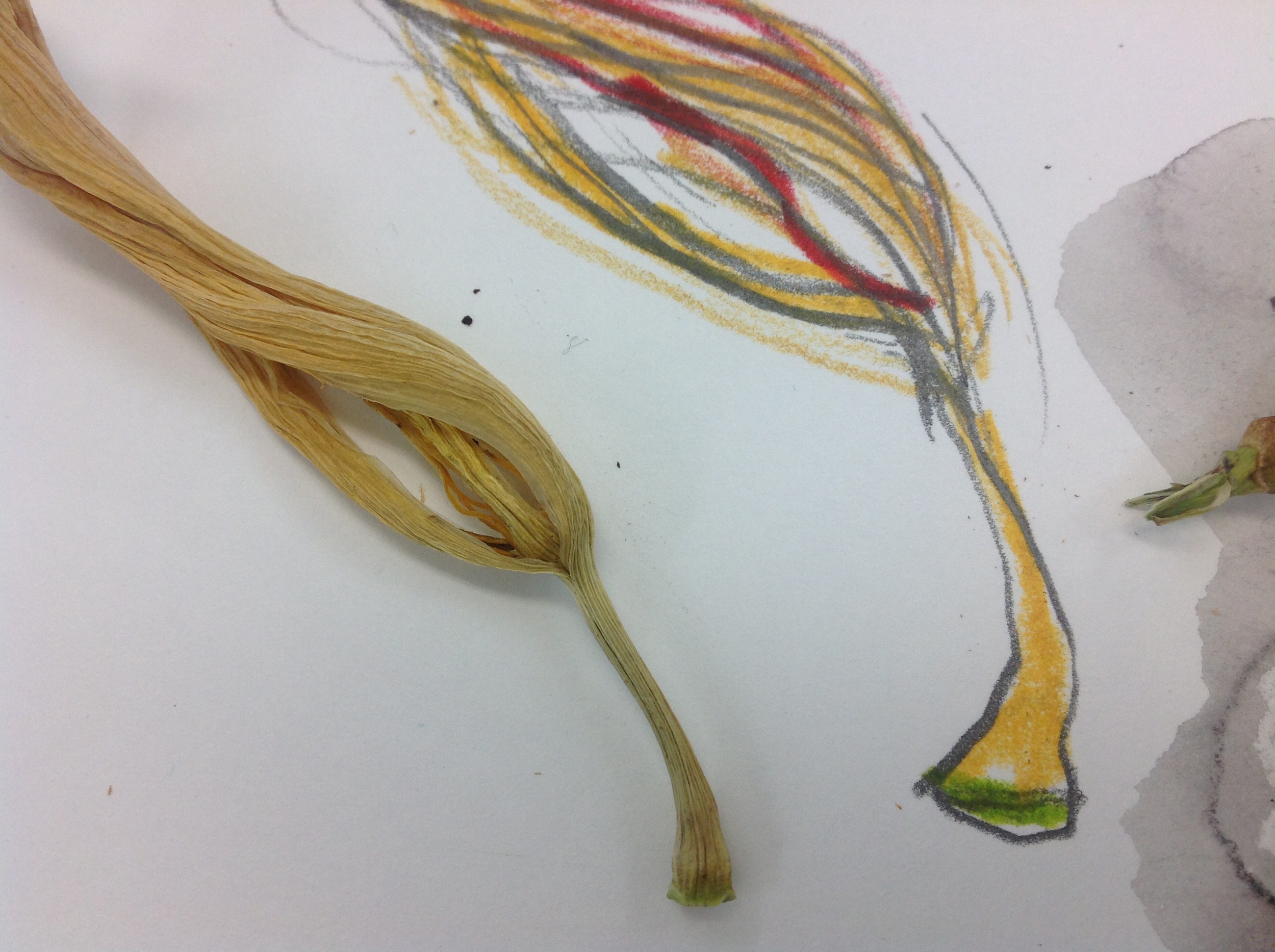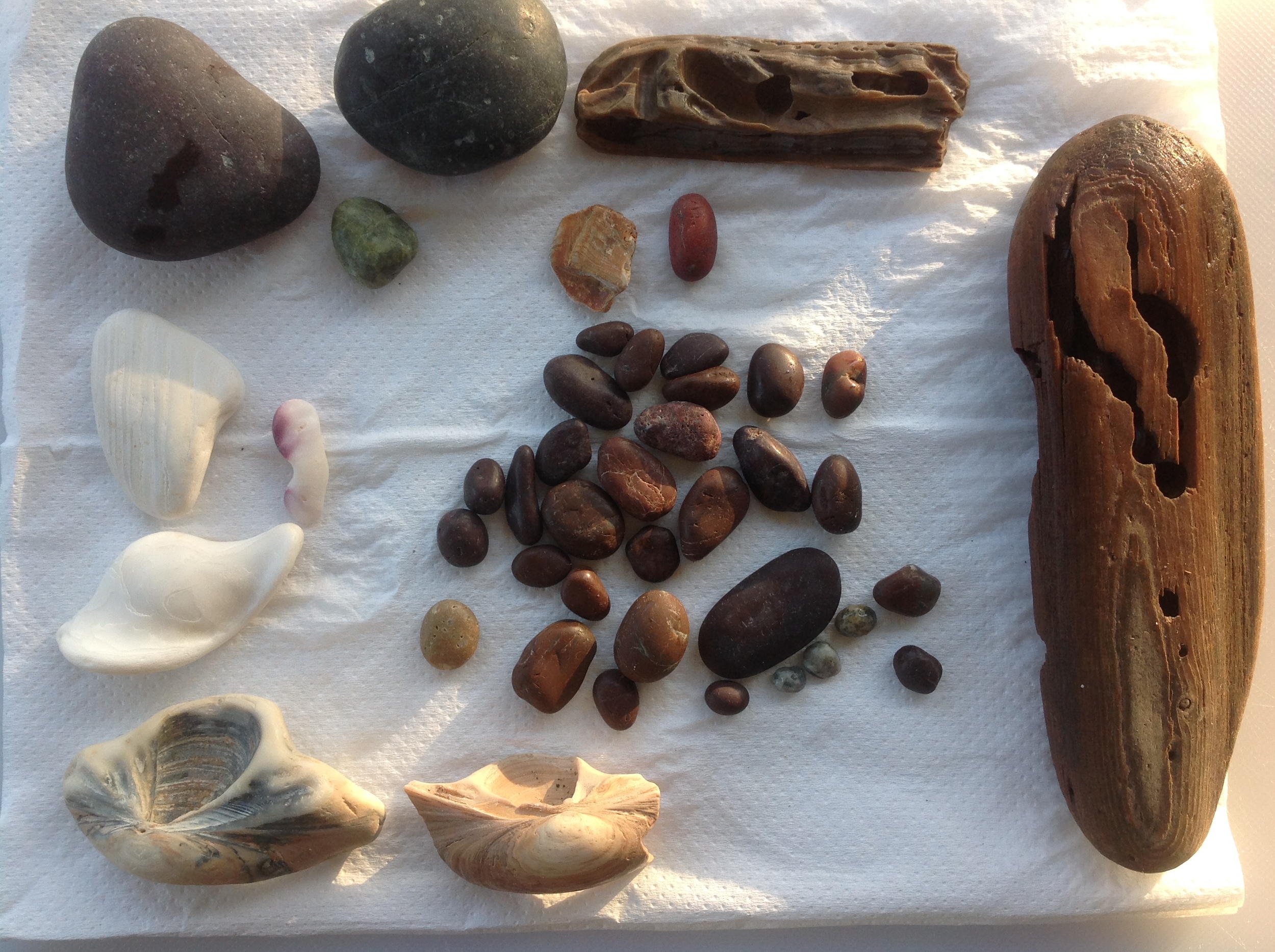On my walk today in Cobble Hill, BC I collected these plant materials on the side of the road. It was a mild but blustery day, leaves were blowing all over the place. Once I started to lay out the materials on my art table I was amazed at the beauty; incredible colour, texture and patterns. A rich source for drawing later today and tomorrow morning.
Weekend workshop "Collecting, Observing, Exploring, a success!
November 21 & 22. 2015 I taught the workshop titled "Collecting, Observing, Exploring" at the Vancouver Island School of Art. It was a real success!
A panorama view of the classroom in progress. Everyone was so engrossed with their work over the weekend it was quiet and peaceful like a meditation room. Click on image to enlarge.
EXAMPLES OF SOURCES OF INSPIRATION AND PROJECTS
Photos and images in the first and second set below by Jill Ehlert © Click to see slideshow
MORE EXAMPLES - Click to see slideshow
WORKSHOP IN PROGRESS
All the drawings below are by the workshop students. The large drawings (24" x 34") were fast gesture drawings of their chosen plant materials.
The drawings they are working on at the table measure 22" x 30". Dip pen, nib and walnut ink.





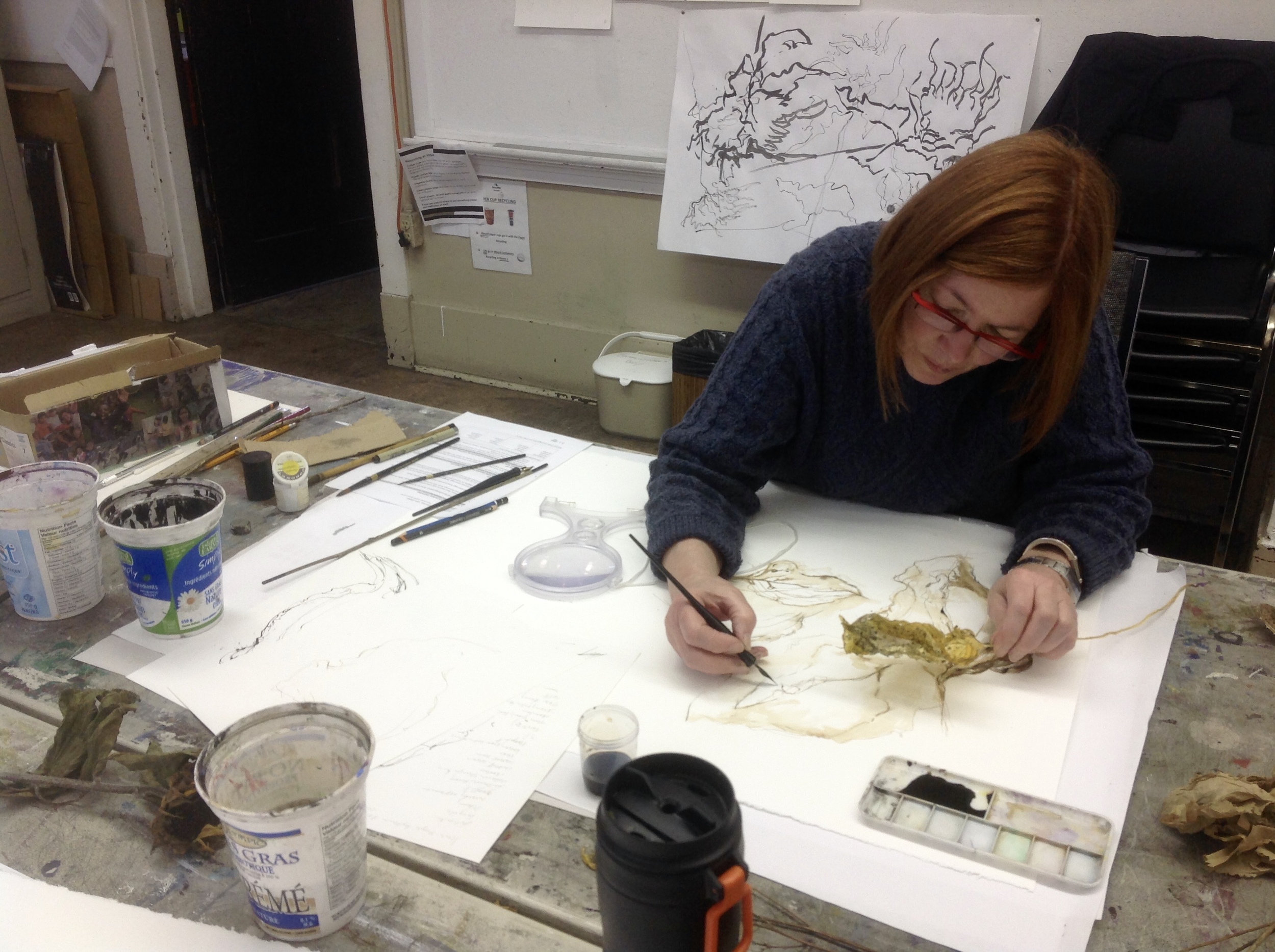






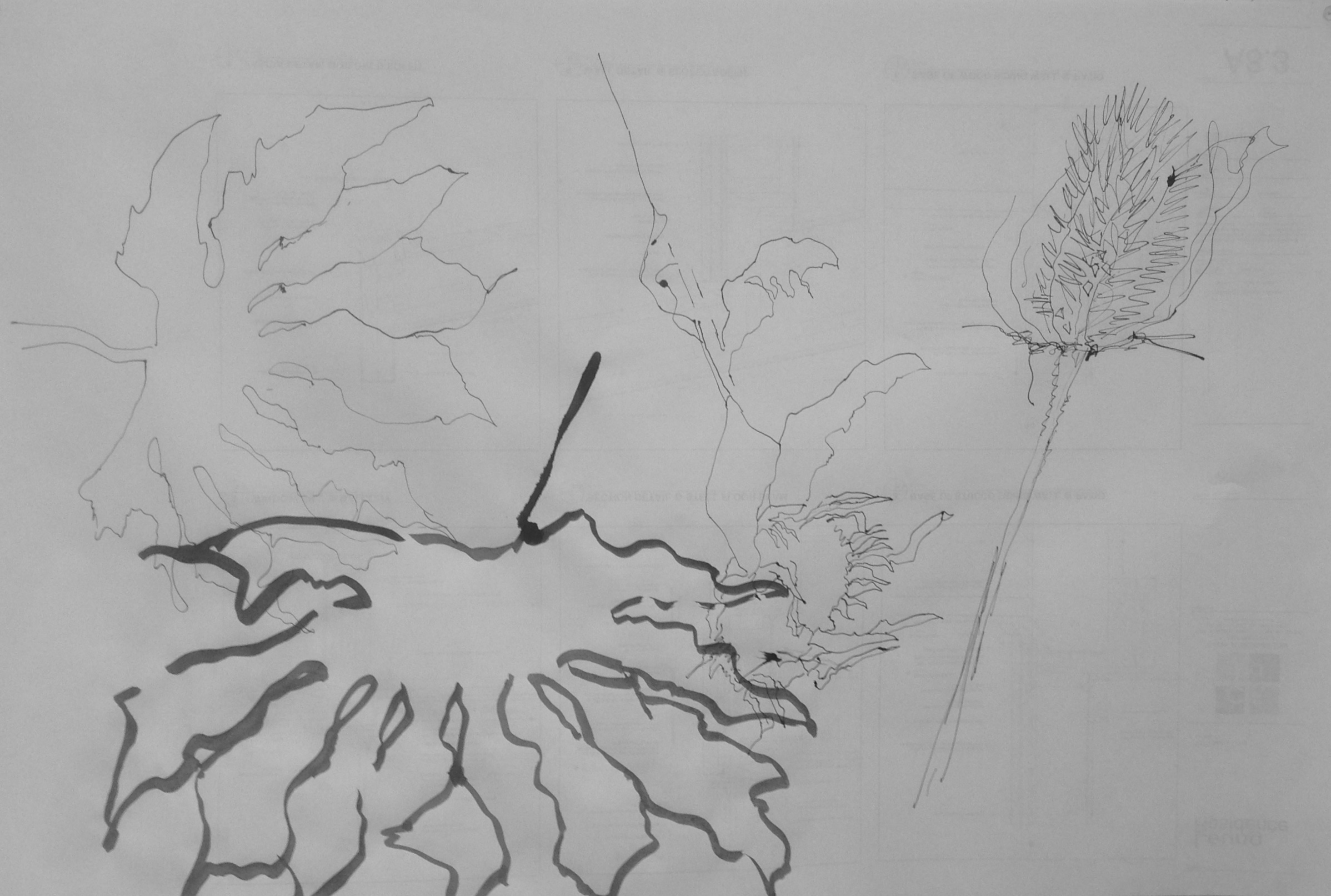



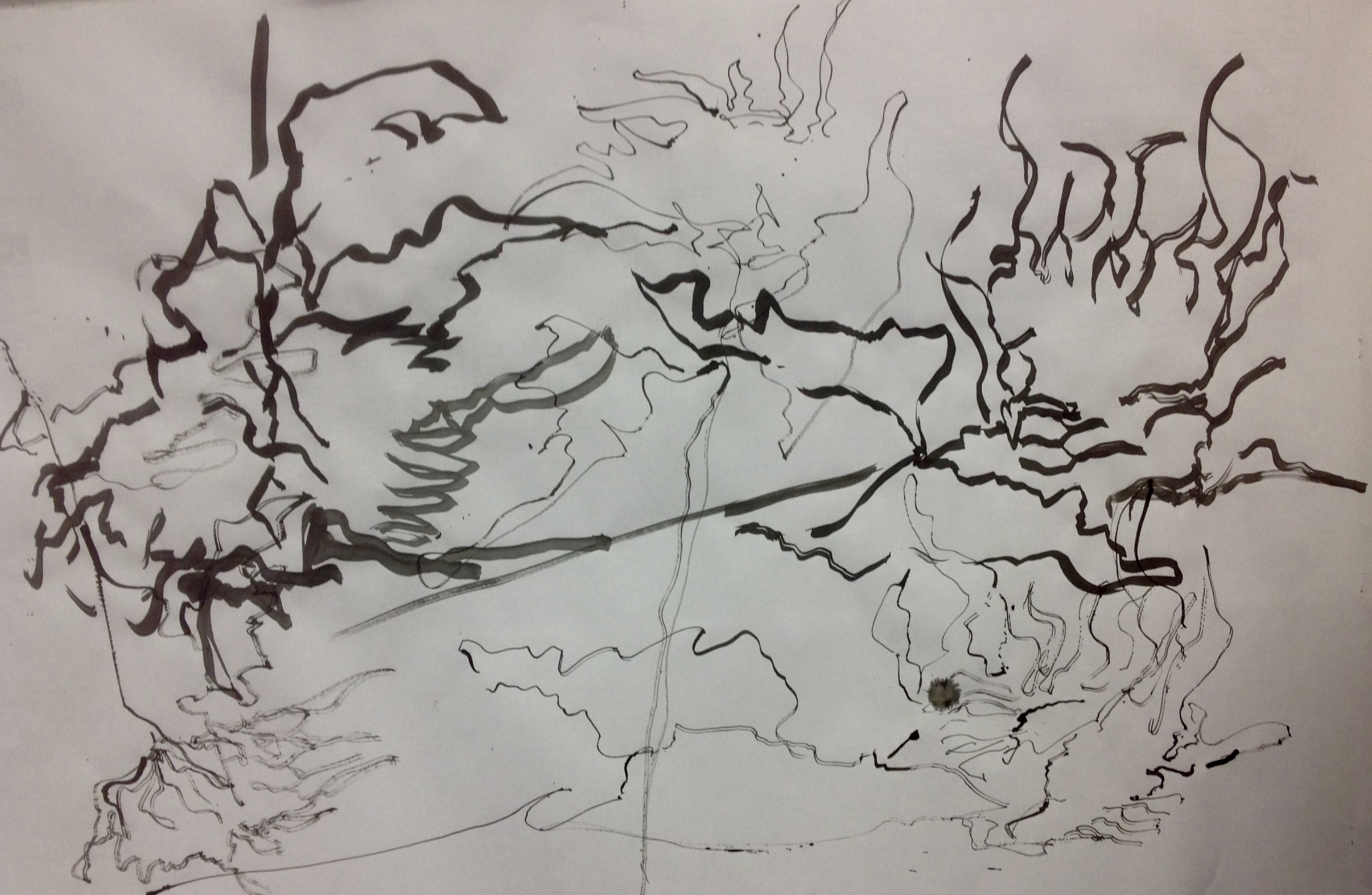
Below are blind contour and contour drawings the class did as a warm-up exercise.
Click on the thumb nails to see slideshow:
STUDENT IMAGES
This set of Images are by student Carla Sandfort - click to make larger.
This set of images are by student Susan Rogers - click to make larger
WORKSHOPS
"Collecting, Observing, Exploring" - i will be teaching this workshop.
I will be teaching this course at the Vancouver Island School of Art
Nov 21 & 22 Sat & Sun, 10 am – 5 pm
Drawing: Collecting, Observing, Exploring (DRWG w137-12)
This workshop concentrates on ways of looking and working. You will take a walk in the VISA garden and collect objects with lines, texture, pattern and shapes. Back in the classroom, you will study these sources of inspiration to extract information and interpret what you see through mark making. The focus of this workshop is to explore new ways to respond to your “collections” and to discover their essences rather than a direct representation. There will be an exploration into materials, techniques and mark making through sketching, drawing, painting, ink washes, stitching, mono printing, and stamping. A variety of surfaces will be provided: BFK, Stonehenge, Kraft, tracing paper, newspapers, tissue paper, etc. This workshop will provide a great way to get new ideas for drawing, painting and other forms of design. No experience necessary.
The following images of seaweed and barnacles are examples of how I use nature as a source of inspiration in my artwork. The body of work below ties in beautifully with what we will be doing in my next workshop titled “Collecting, Observing, Exploring” As many of you know – I have been working for several years now on an ongoing series titled “Intertidal”.
OTHER TYPES OF INSPIRATION ON MY BEACH WALKS
BEAUTIFUL RICH SEAWEED AND CRITTERS
Below are observation sketches of seaweed, along with mark making exploration and pattern studies that I see within the seaweed and detailed study drawings of their cellular structures.
Mixed Media Explorations of Seaweed and Barnacles
RESEARCHING BARNACLES AND INSPIRED WORK
CLOSE UP STUDIES OF STAR FISH WITH MAGNIFYING GLASS AND PATTERN INVENTIONS
SKETCHBOOK WORK DEVELOPING ABSTRACT IDEAS FROM ALL OF MY STUDIES AND FINDINGS.
EXPLORATIONS INTO SURFACE AND TEXTURES
SMALL FINISHED STUDIES INSPIRED BY THE COLLECTIONS, OBSERVATIONS AND EXPLORATIONS
FINISHED DRAWING "DRIFTERS" © 2014 INSPIRED BY MY PLANKTON RESEARCH 2009
WORKSHOPS
One of the projects from the upcoming weekend workshop that I will be teaching.
One of the projects from the upcoming weekend workshop
WORKSHOPS
Upcoming workshop this weekend - there are a few spaces left.
I will be teaching "Creating Marks Through Actions" at the Vancouver Island School of Art
Oct 3 & 4 Sat & Sun, 10am - 5pm All supplies are included.
This two-day workshop focuses on unconventional ways of creating marks. The first day involves creating a collection of marks on paper using traditional tools including pen, ink and graphite, as well as more unconventional ones such as an awl, smoke, needle, thread, hammer and nail. A range of movements and actions will be explored: puncturing, smoking, burning, rubbing, cutting and sewing, etc. You will make a book and a collage from mark-making explorations on the second day. Design and composition will be covered along with a demonstration on different methods of adhering collage materials. This workshop is ideal for those looking to expand their mark-making vocabulary and create unique surfaces with inventive marks. No experience necessary.
There are still a few spaces left. Call 250.380.3500 to register.
Examples of some of the processes we will be working with.
BOOK WORKS
Progress on my Leporello book for the group exhibit “Rebound”
I have been working on my Leporello book for REBOUND and I have finished the first four pages.
BOOK WORKS
First four pages in my Leporello for the group show “Rebound”
I have been working on the Leporello book for the REBOUND Exhibtion and have the first four pages finished. The requirements for this show has a maximum size of 12" X 12" X 12". My book will measure 11 1/4" tall with a diameter of 12". In image #7 you can see how it will be displayed.
BOOK WORKS
Leporello and Concertina Books
Leporello book I made four years ago. This has been a favourite book structure.
Name derivative:
The term leporello refers to printed material folded into an accordion-pleat style. Also sometimes known as a concertina fold, it is a method of parallel folding with the folds alternating between front and back. The name likely comes from the manservant, Leporello, in Mozart’s opera Don Giovanni. Famed rogue and lover Don Giovanni (in Italian – also known as Don Juan in Spanish) has seduced so many women that when Leporello displays a tally of his conquests, it unfolds, accordion-style, into a shockingly long list. Many leporellos are used as a way of telling a story, while others are purely visual.
In the Victorian era, leporellos were quite commonly used as travel souvenirs, depicting beautiful, panoramic scenes of the places travelers had just seen, customs and culture of the region and the like. They are often used in illustrated children’s works, as well. Collectors of books and paper ephemera will love their scarcity and delicate beauty.
Source: Abe Books
Book Works
Work in Progress for the upcoming group show - “Rebound”
Working in the studio on my book to be included in the REBOUND Exhibition at Gallery 1580.
Images: Creating a "Leporello" structure for my book, which is the Italian word for an accordion style book; working on the layout and possible ideas; beginning the artwork with a Fluid painting technique using tea stain and India ink. This book will contain marks created through the actions of burning, piercing, punching holes, rubbing, folding, impressing lines, smoking, drawing and painting.


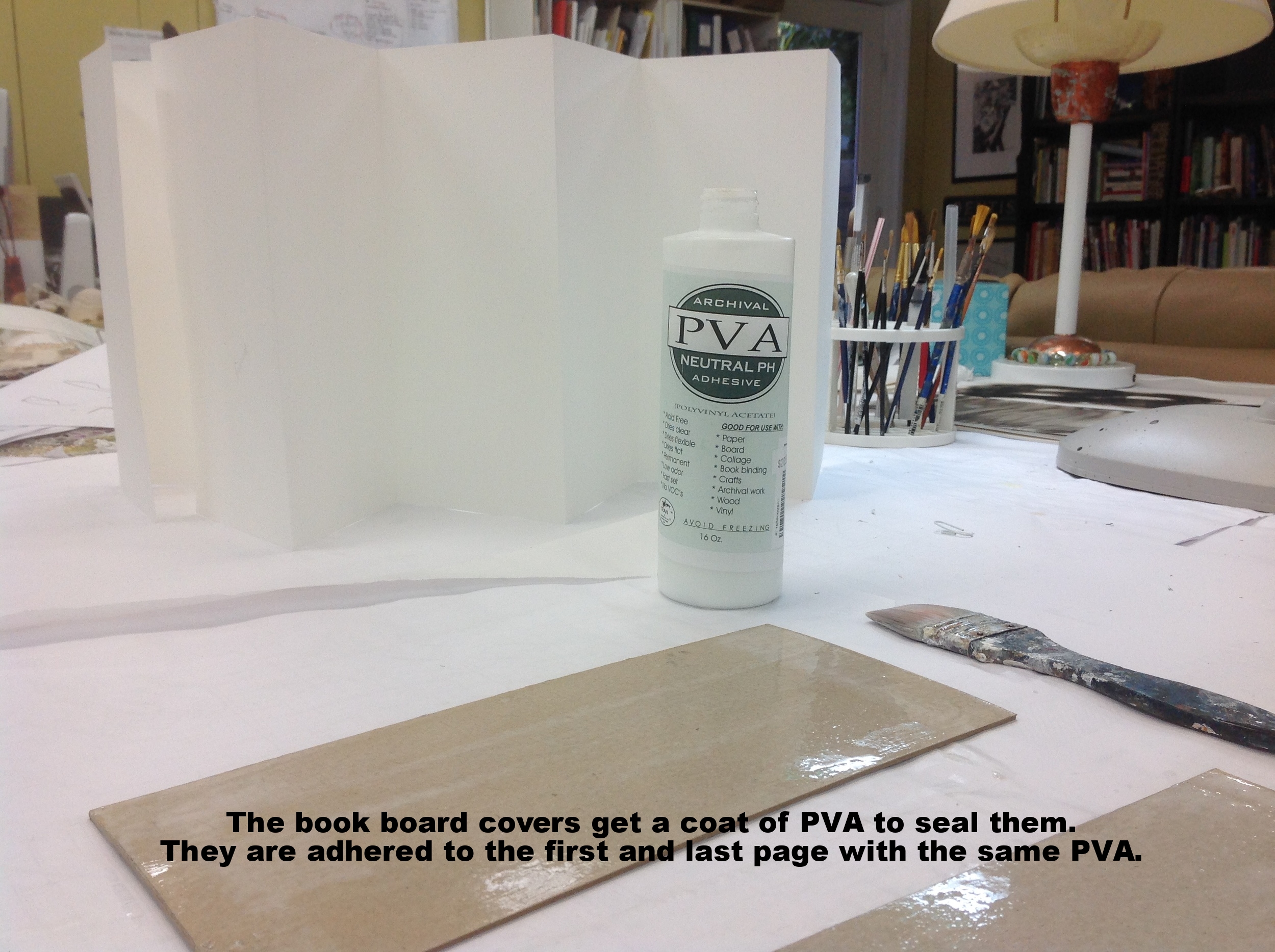



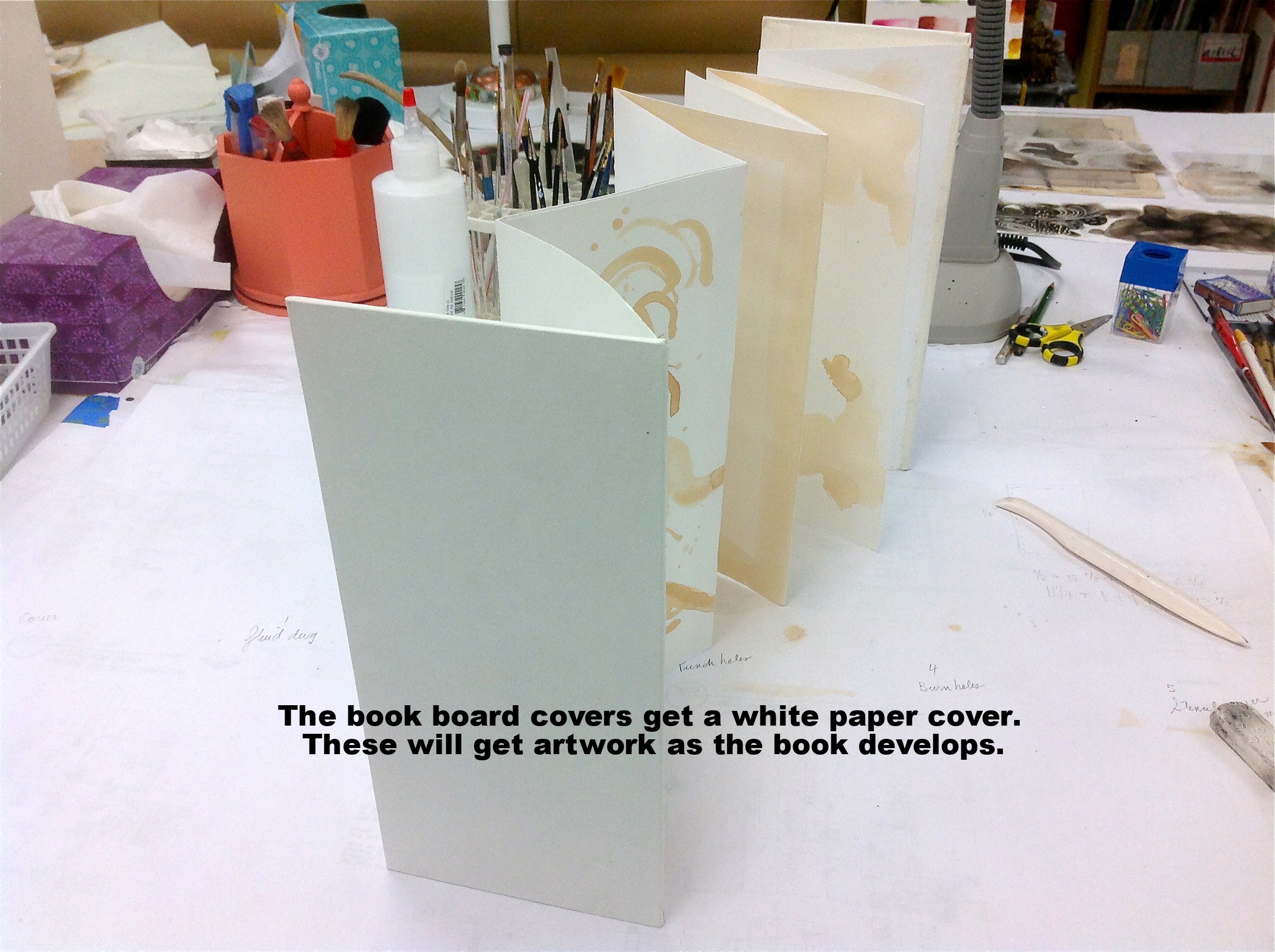





EXHIBITIONS
“Rebound” - The Book as a Contemporary Art Form
I will be participating in this exhibit.
Gallery 1580 - 1580 Cook Street, Victoria, BC
Opening reception October 3rd – 7:00 – 9:00 p.m.
Exhibition continues through October 17th.
Experimental new works by 18 west coast artists. Works reference the genres of drawing, painting, photography, sculpture and installation.
Exhibiting artists include: Julia Bennett, Jane Coombs, Sarah Cowan, Troi Donnelly, Lorraine Douglas, Jill Ehlert, Luis Mario Guerra Veliz, Kathy Guthrie, Margaret Hantiuk, Barry Herring, Elizabeth Litton, Kyle Labinsky, Connie Michele Morey, Richard Pawley, Regan Rasmussen, Trish Shwart, Diana Weymar and Caren Willms.
WORKSHOPS
CREATING MARKS THROUGH ACTIONS
October 3 & 4 Saturday and Sunday, 10am - 5pm
I will be teaching this 2-Day Drawing workshop at the Vancouver Island School of Art
These images are examples of some of the actions we will be exploring. Staining, drawing, cutting, piercing, burning, smoking, folding, crumpling, impressing, rubbing, embossing, sewing, binding...
WORKSHOPS
Teaching 3 workshops.
I am pleased to announce that I will be teaching the following three workshops at the Vancouver Island School of Art [VISA]
All of the links below will take you directly to the website for the Vancouver Island School of Art.
VANCOUVER ISLAND SCHOOL OF ART
The Vancouver Island School of Art is a learning community dedicated to the advancement of art education through comprehensive programs and presentations for adults of all ages. The focus of the courses and workshops offered by the school is on technique, personal expression and contemporary context.
Drawing: Creating Marks Through Actions (DRWG w103)
This two-day workshop focuses on unconventional ways of creating marks. The first day involves creating a collection of marks on paper using traditional tools including pen, ink and graphite, as well as more unconventional ones such as an awl, smoke, needle, thread, hammer and nail. A range of movements and actions will be explored: puncturing, smoking, burning, rubbing, cutting and sewing, etc. You will make a book and a collage from mark-making explorations on the second day. Design and composition will be covered along with a demonstration on different methods of adhering collage materials. This workshop is ideal for those looking to expand their mark-making vocabulary and create unique surfaces with inventive marks. No experience necessary.
Oct 3 & 4 Sat & Sun, 10am - 5pm
Jill Ehlert
Tuition: $235.00 (12 hrs) (materials included)
ACTIONS: Fumage [Smoking] , Drawing, Erasing, Punching, Puncturing,Piercing, Staining, Burning, Scorching, Folding, Cutting, Ripping, Stitching, Crumpling, Layering, Frottage [Rubbing] TOOLS: Candle smoke, Pen, Brush and Ink, Pencil, Eraser, Hammer and Nail, Push Pins, Punch, Tea and Coffee Stain, Incense, Blades, Needle and Thread...
All artwork below is by Jill Ehlert
Sketchbook Development (DRWG w132-6)
The focus of this class is to give a series of fast paced exercises to get you comfortable and working in your sketchbook. A wide range of ideas, materials and techniques will be explored in your sketchbook to get you started; they are designed to keep you going back to your sketchbook. Backgrounds, techniques, mark making explorations, sketching, drawing, writing, etc. will be explored. You will leave this workshop inspired to make sketchbook work part of a daily practice. No experience necessary.
Nov 8 Sunday, 10am - 5pm
Jill Ehlert
Tuition: $135.00 (6 hrs) (materials included)
All artwork below is by Jill Ehlert

















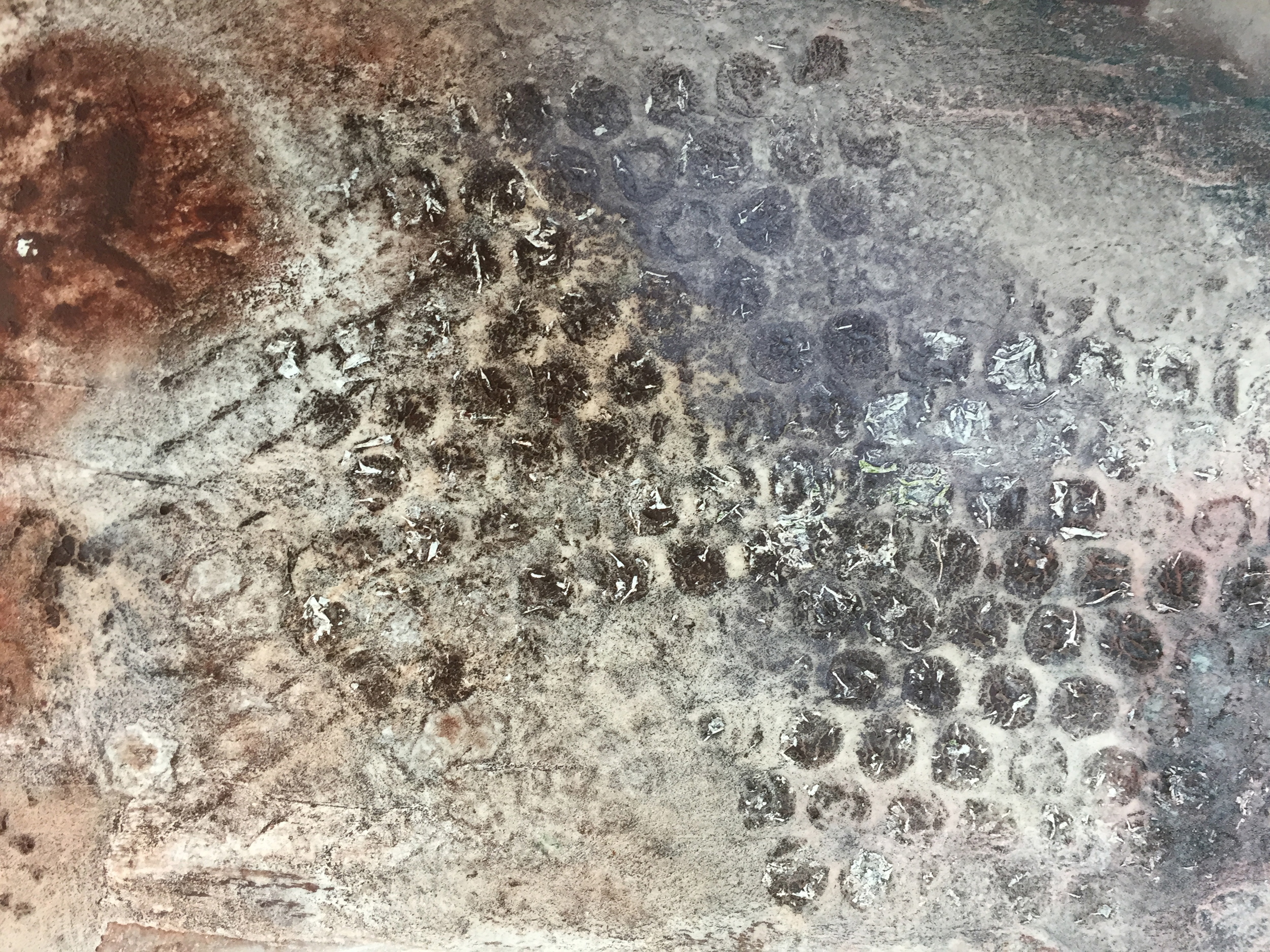







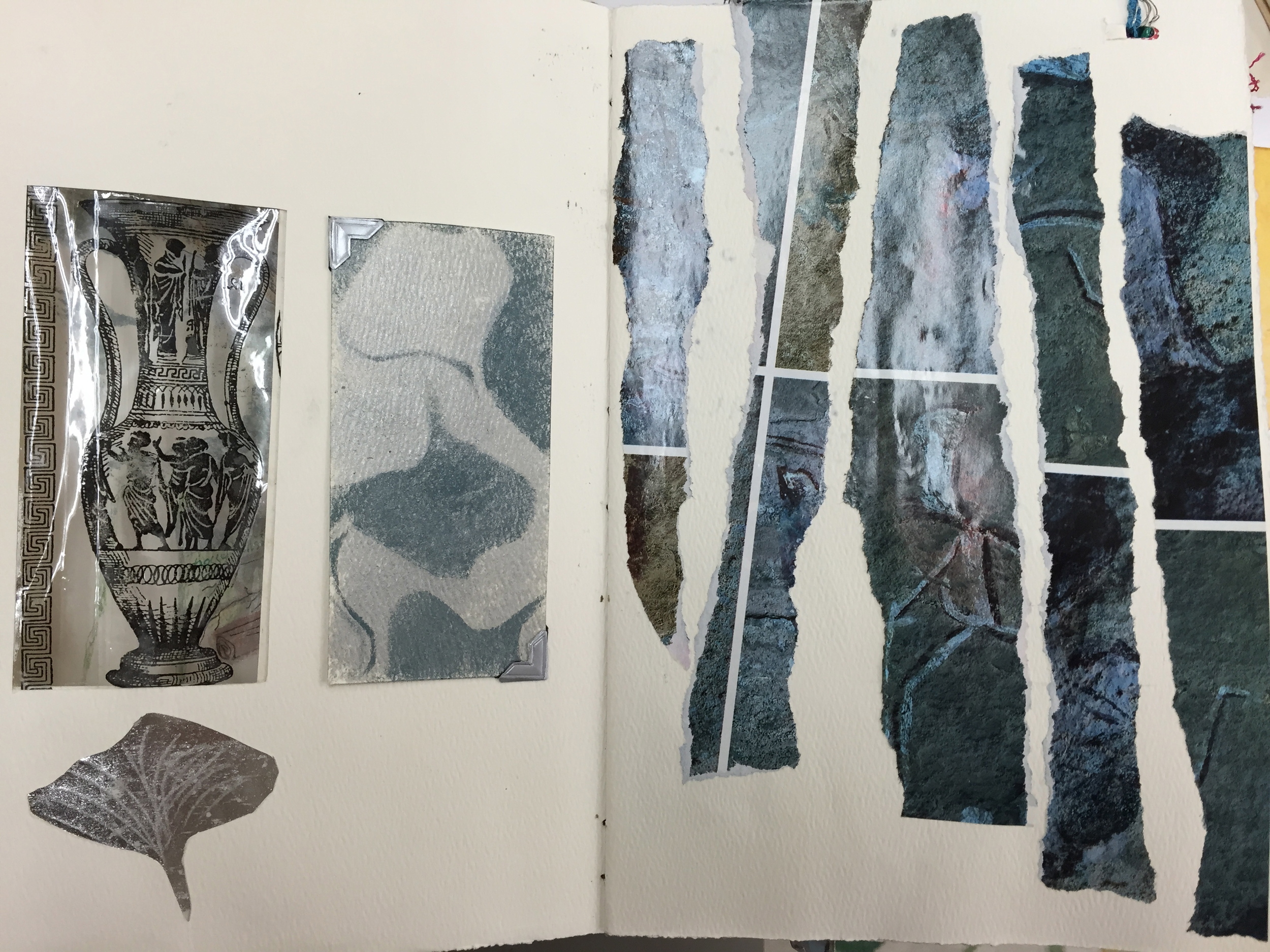




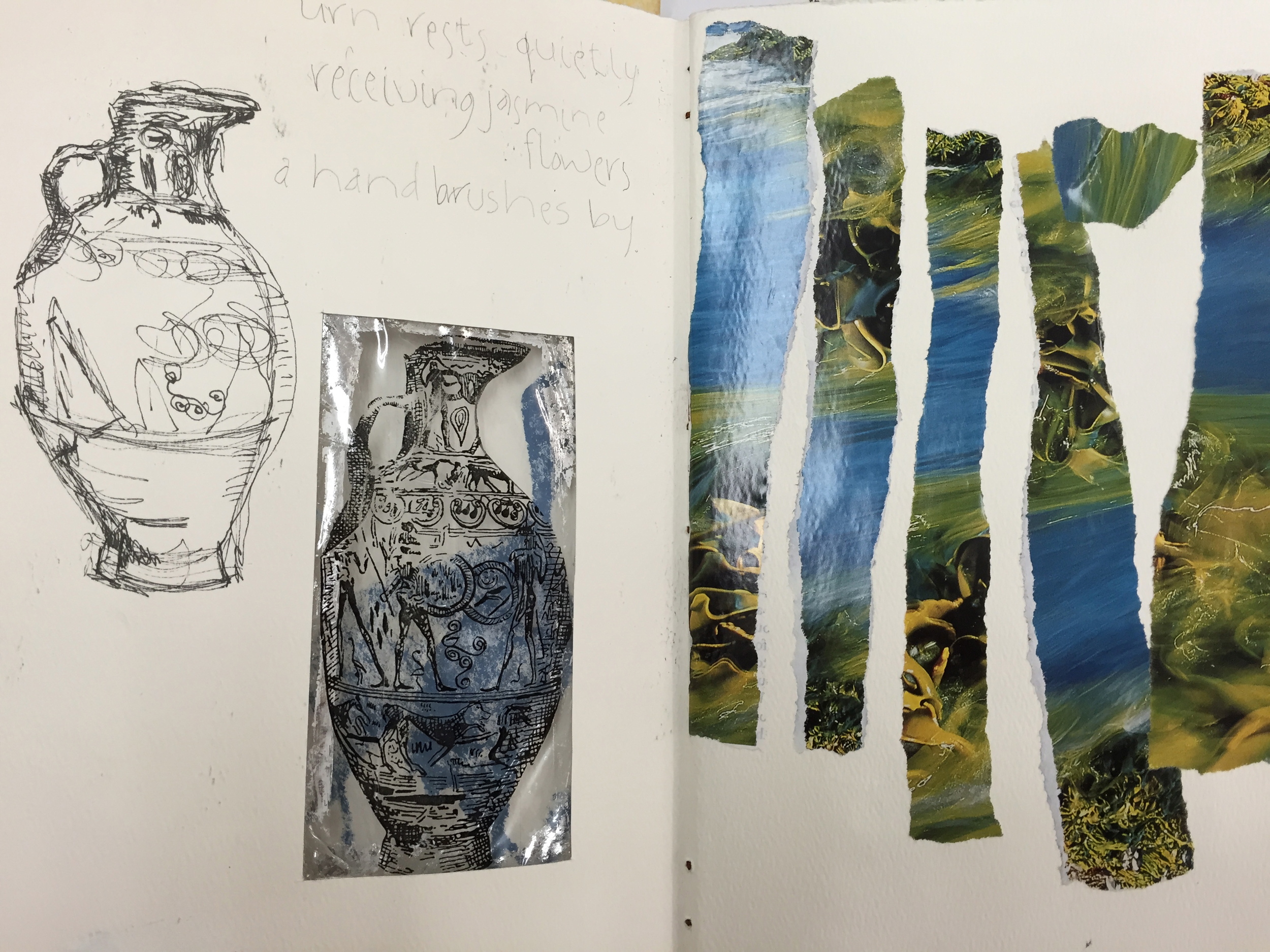


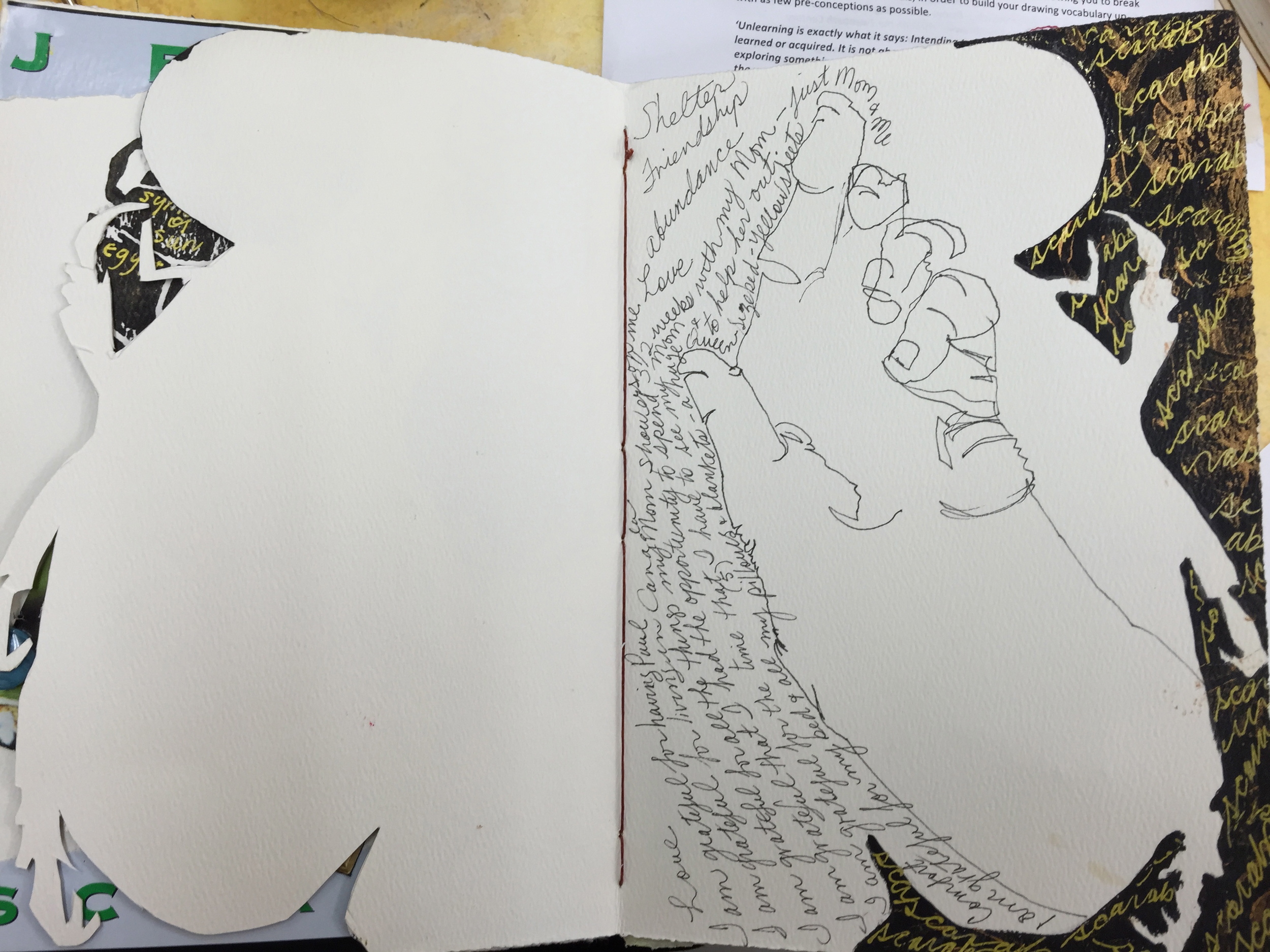





Drawing: Collecting, Observing, Exploring (DRWG w137-12)
This workshop concentrates on ways of looking and working. You will take a walk in the VISA garden and collect objects with lines, texture, pattern and shapes. Back in the classroom, you will study these sources of inspiration to extract information and interpret what you see through mark making. The focus of this workshop is to explore new ways to respond to your “collections” and to discover their essences rather than a direct representation. There will be an exploration into materials, techniques and mark making through sketching, drawing, painting, ink washes, stitching, mono printing, and stamping. A variety of surfaces will be provided: BFK, Stonehenge, Kraft, tracing paper, newspapers, tissue paper, etc. This workshop will provide a great way to get new ideas for drawing, painting and other forms of design. No experience necessary.
Nov 21 & 22 Sat & Sun, 10am - 5pm
Jill Ehlert
Tuition: $235.00 (12 hrs) (materials included
All artwork below is by Jill Ehlert
INSPIRATION AND IDEAS
Lecture - “Development of an Idea”
On Thursday March 26, 2015 - I gave a lecture and slide show presentation to the students of Advanced Drawing II at the Vancouver Island School of Art
Click here to see the slideshow presentation
Click here to see more images of LandForms I and LandForms II
Some of my sketch books since 1984
Seaweed study from a sketch book page
ARTISTS
Stephanie Jonsson
Fabricated Ecologies - Stephanie Jonsson
A year ago Stephanie Jonsson and I were selected by curator Katie Brennan of the Lake Country Public Art Gallery to participate in a two-person show. Katie felt there was a "synergy" between our work. "Through the Strange, new essences, creating the world anew" has been showing since October 8th. 2014 and ends this Saturday, November 15th. 2014.
Click here to see images, slideshows and videos of our show.
I wanted to introduce you to Stephanie and her sculptures.
Since graduating from the University of Alberta in 2005 with a Bachelor of Fine Arts with a major in sculpture, Stephanie’s practice has grown to include ceramics and textiles, both mediums that she was not formally trained in.
Bryce Evans Photography - Stephanie Jonsson at Medalta Potteries, Medicine Hat, Alberta
Stephanie Jonsson Biography
Since graduating from the University of Alberta in 2005 with a Bachelor of Fine Arts with a major in sculpture, Stephanie’s practice has grown to include glazes and fabrics, both mediums that she was not formally trained in.
In 2007/2008, Stephanie did a yearlong residency at Harcourt House Gallery in Edmonton, AB and was nominated for the Emerging Artist of the Year for the Mayor’s Evening of the Arts Awards in Edmonton. In September 2009, Stephanie completed a two-month residency at the Banff Centre for the Arts in Banff, AB. During 2009 she received the Award of Achievement from the Alberta Craft Council for outstanding efforts in ceramics, and was listed among Avenue Magazine’s “Top 40 Under 40” in Edmonton. In 2012 Stephanie completed her Master of Applied Arts degree at Emily Carr University in Vancouver, BC.
Stephanie has taught art at various organizations in Edmonton, including the Art Gallery of Alberta, the Nina Haggerty Centre for the Arts, and Harcourt House Centre. She has taught art to all ages of elementary and secondary school, as well as adult classes and classes for developmentally disabled adults.
Master of Applied Arts Degree, Emily Carr University of Art and design (Sept 2010 - Oct 2012)
In 2013/2014, Stephanie taught all levels of undergraduate ceramics at Kwantlen Polytechnic University in Surrey, BC.
She is currently doing a year-long residency at Medalta in Medicine Hat, AB.




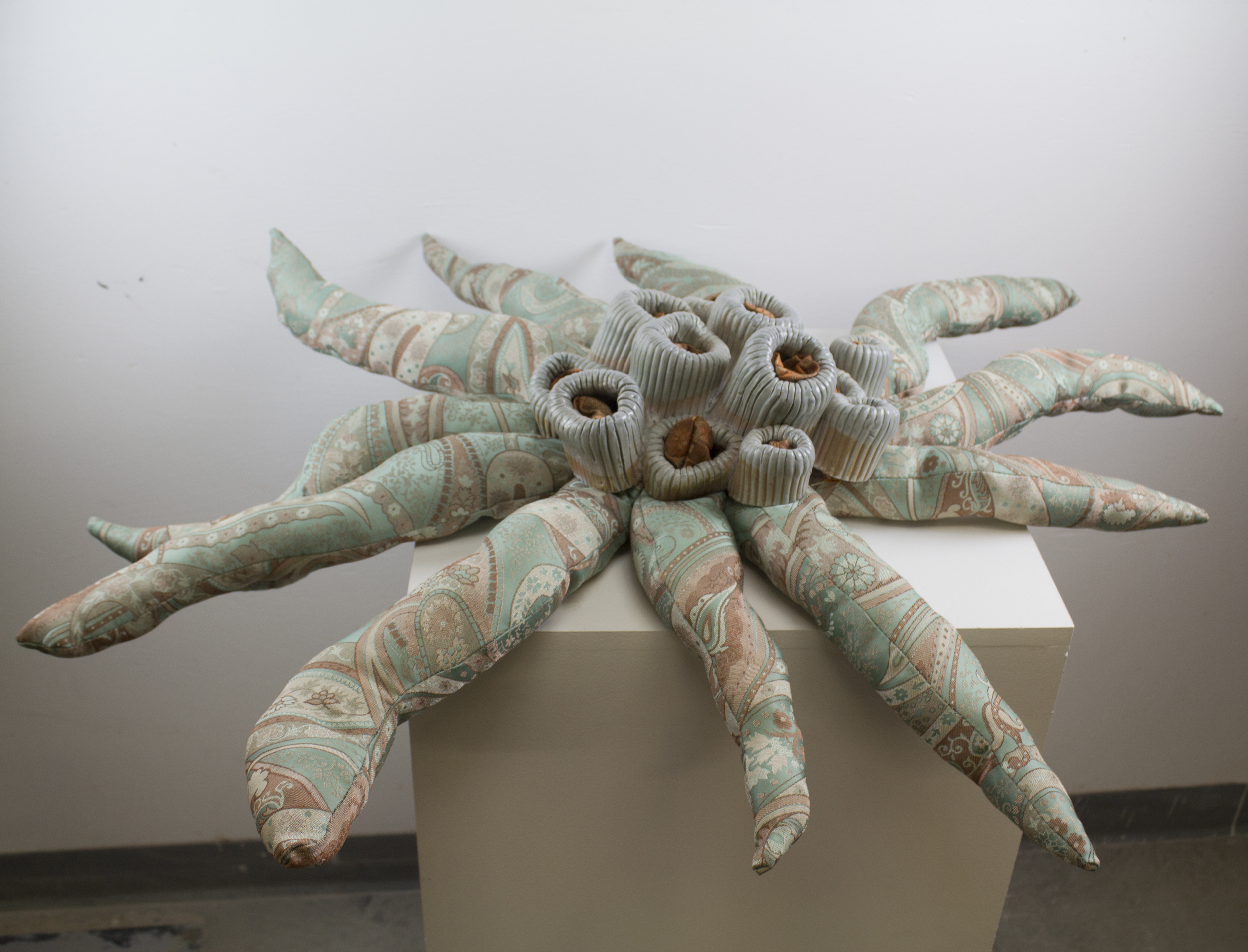


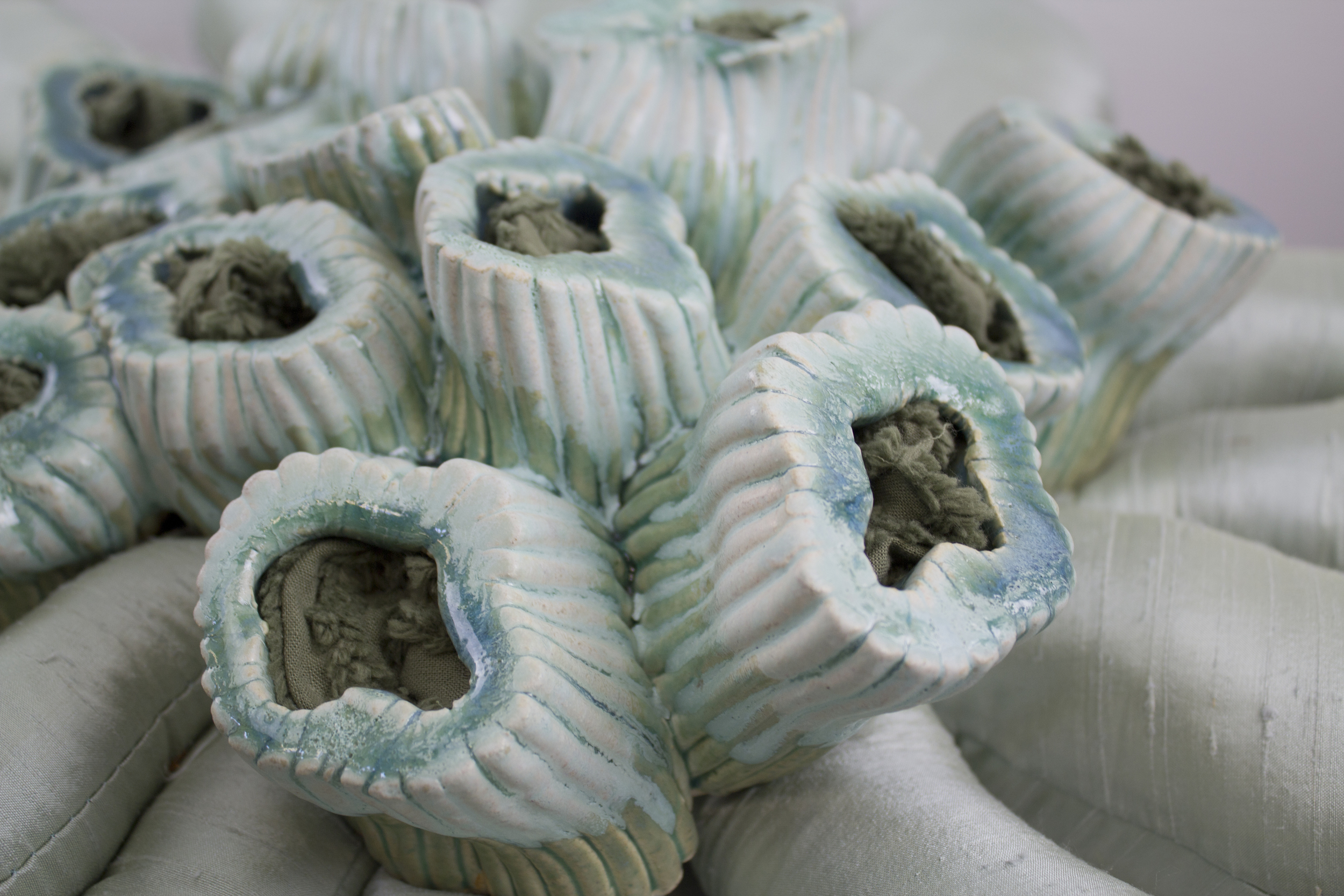




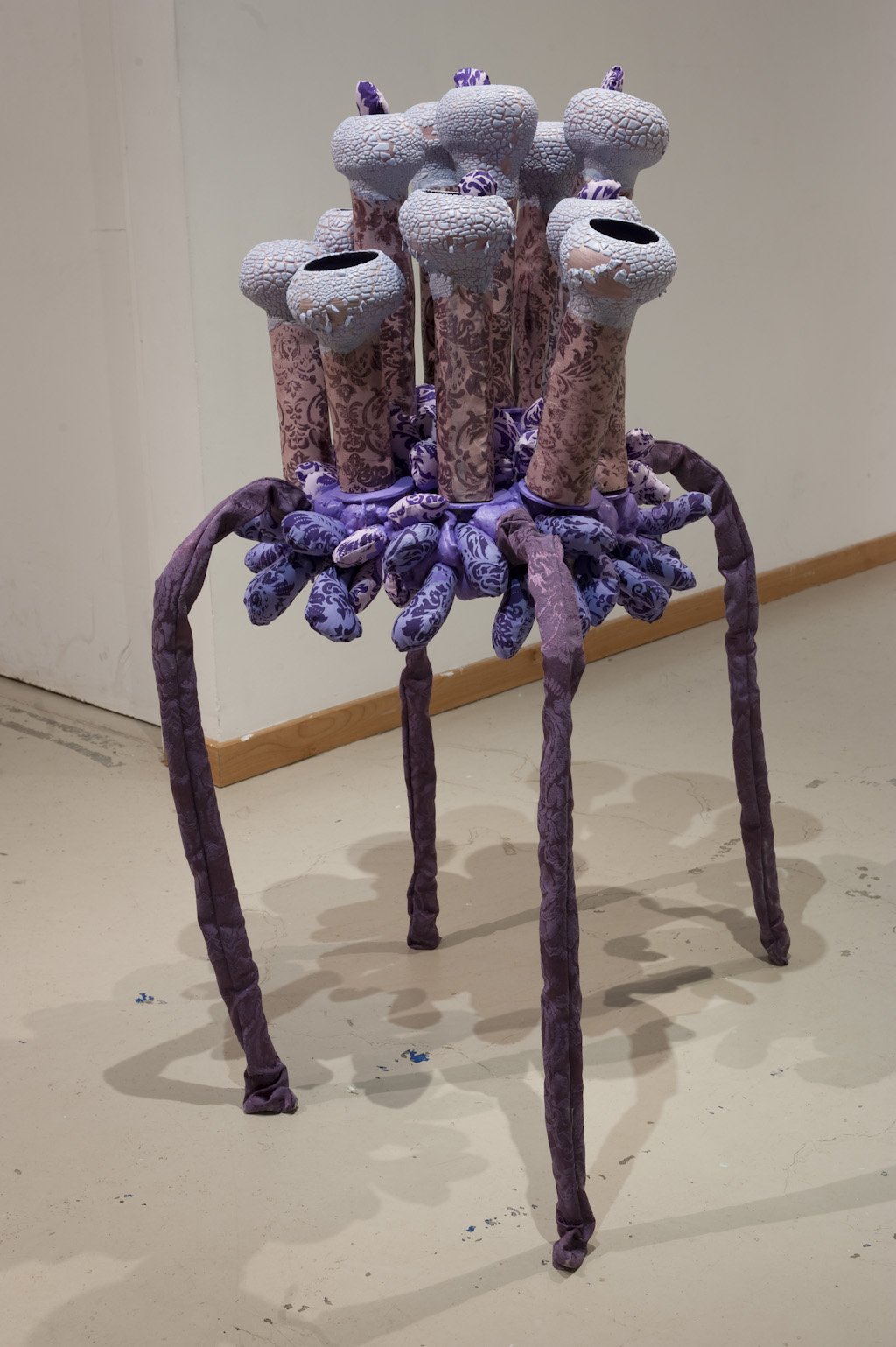






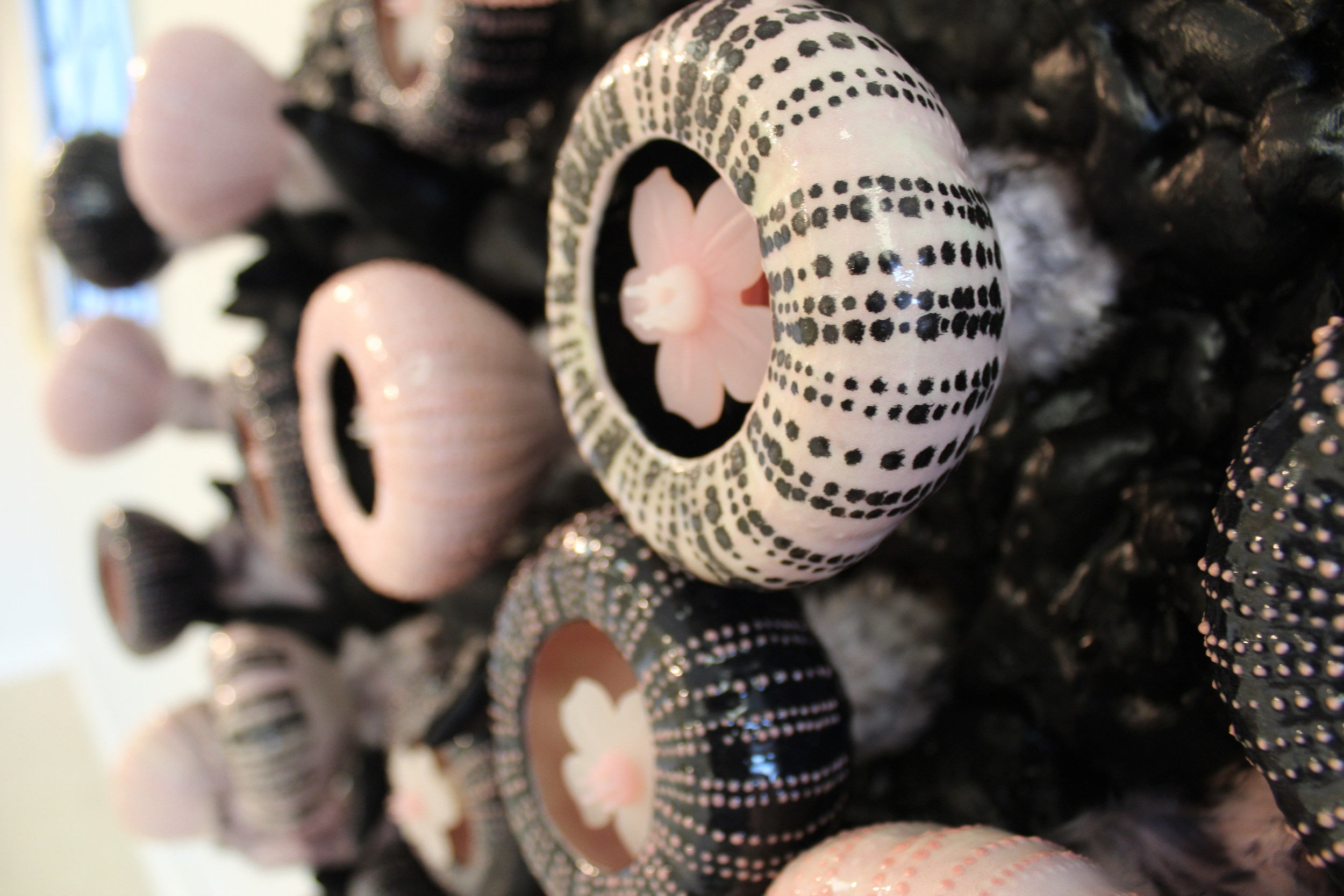




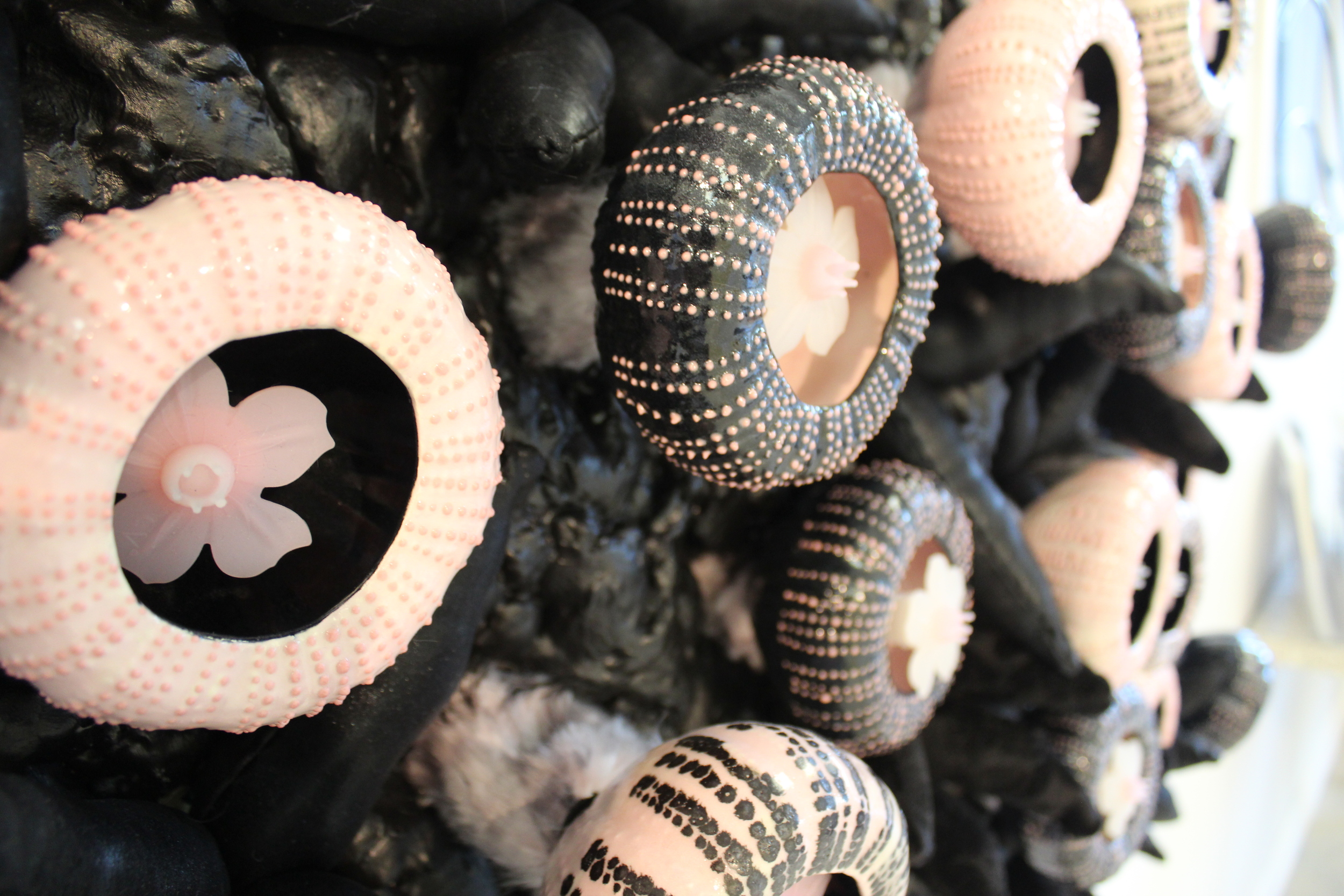

Photographs by Stephanie Jonsson
Stephanie Jonsson Artist Statement
Of personal interest to me is the common usage of botanical subjects in abstract and stylized form to decorate the surfaces of Arts and Crafts metalwork, ceramic, textiles, glass, and furniture. In response to John Ruskin's ideas these artists returned to the observation of nature in their work, and the phenomenon of appropriating nature, which started in the 19th century and continues into the present day. However, over time, architects, designers, and artists have started to look less to nature as a source, and more to a synthetic nature. During the early nineteenth century, designers were not interested in capturing a naturalistic representation of a tendril from a plant, rather they were searching for a form that spoke to a universal plant. Victorian architects used the practice of conventionalization as a stylization of the leaf ornament, so asymmetry in the veins of a leaf would be abandoned in favour of symmetrical cutouts. This reduction or stylization of the plant form in order to confirm to anthropocentric systems of order is precisely the type of appropriation in which I am interested.
I find that the stylization of plants in the work of this period has re-emerged in a contemporary context and it is appearing in everything from interior design to website, furniture, and clothing design. Humans have continued to appropriate and manufacture nature. I am particularly interested in the way that nature has been commodified as consumable imagery, and how the repetition of this imagery has become kitsch.
For this new body of work, I used mostly extruded ceramic forms to produce multiples to create a sort of facsimile of nature. Each repeated element is unique and flawed, yet somehow self-similar. I use abstraction loosely: these sculptures do not accurately depict real world animals or plants, however, they merely make associations with creatures, specifically underwater ones. The objects stay true to a sort of manufactured ecology: these sculptures are clearly made with techniques that are a product of culture, not nature.
In the piece, “Urban Urchins”, I found consumer objects that imitate natural forms and slip cast them to produce multiples, transforming them into a type of kitsch that is twice removed from nature: a facsimile of a facsimile of nature. In this case, I found a replica of a sea urchin and cast it twenty five times. Through the process of slip casting, the forms become mutated and distorted from their original form. This is not unlike the process of evolution in nature, which requires self-replicating entities with tiny errors to sample other configurations. New genes can be generated from an ancestral gene when a duplicate copy mutates and acquires a new function. The generation of new genes can also involve small parts of several genes being duplicated, with these fragments then recombining to form new combinations with new functions.
In “Urban Urchins”, the mutations of slip casting mimic the tiny “copy errors” in the process of evolution, and a whole new organism is created. The organism that is created in my work is an artificial object that imitates nature and its processes.
I am not attempting to convey a solution to the multitude of problems that our environment faces, but rather to call attention to this curious cultural trend in hopes that a greater awareness will emerge on an individual level. Through reiterating natural forms; deconstructing and reassembling organic order, I am addressing a collective estrangement from our origins.
Be sure to check out Stephanie Jonsson's website and blog for more information and images of her work.
Medalta International Artists in Residence Program
Set against the dramatic cliffs of the South Saskatchewan River in Medicine Hat, Alberta, the 150 acre Historic Clay District was once home to some of Canada’s most important clay factories, including Medalta Potteries, Hycroft China, National Porcelain and Alberta Clay Products. Today, this history is being preserved with the unique Medalta Potteries site providing the setting for a living, working museum, vibrant education centre, a Reception Gallery, and a 12,000 square foot contemporary ceramics studio, The Shaw International Centre for Contemporary Ceramics.
Operating out of the Shaw Centre, the Medalta International Artists in Residence Program is designed to serve artists at all stages of their careers. Students, emerging, and established artists are able to work together in our open, spacious, semi-private studios. The studio experience is one of cooperation and creativity. Artists come from all over the world and bring different experiences, techniques and ideas to our unique studios here in the Historic Clay District. Our studios are full of vibrant energy with resident ceramic artists, community education classes, workshops, and kids’ classes all combining to make this a vital working museum, education centre and studio complex.
NEW SERIES
Black and white study of the various shapes in tide pools. Exploring and experimenting.
11" x 7.5" each India ink, graphite, gesso









